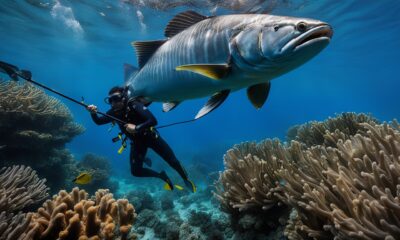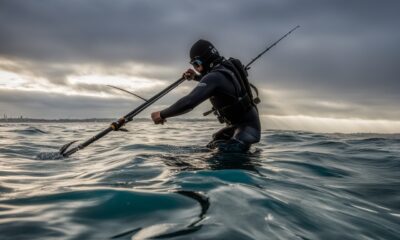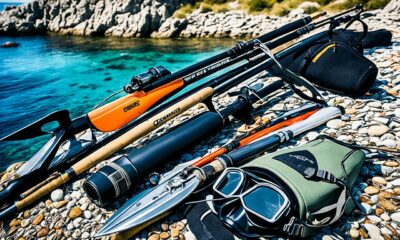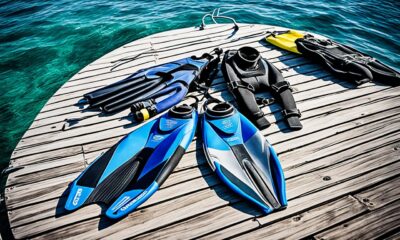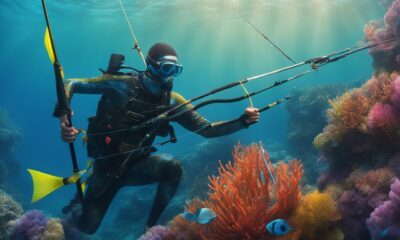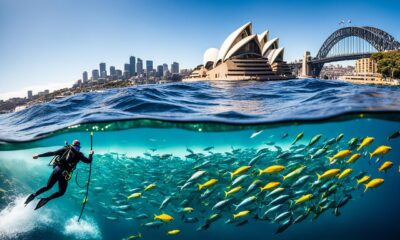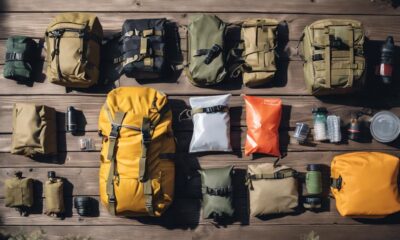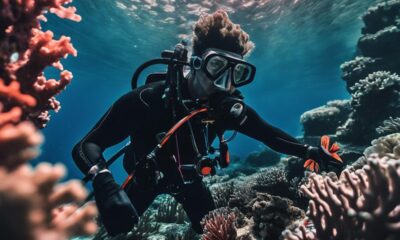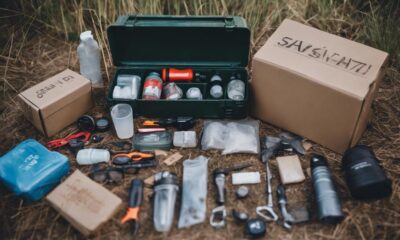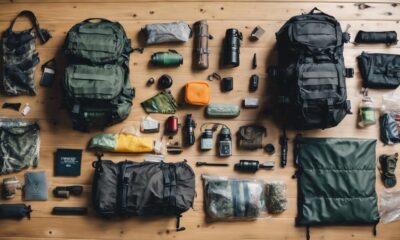Spearfishing
Spearfishing Around Sharks: Staying Safe in the Deep
Dive into my guide on spearfishing-around-sharks, where I share tips for a safe, thrilling underwater adventure.
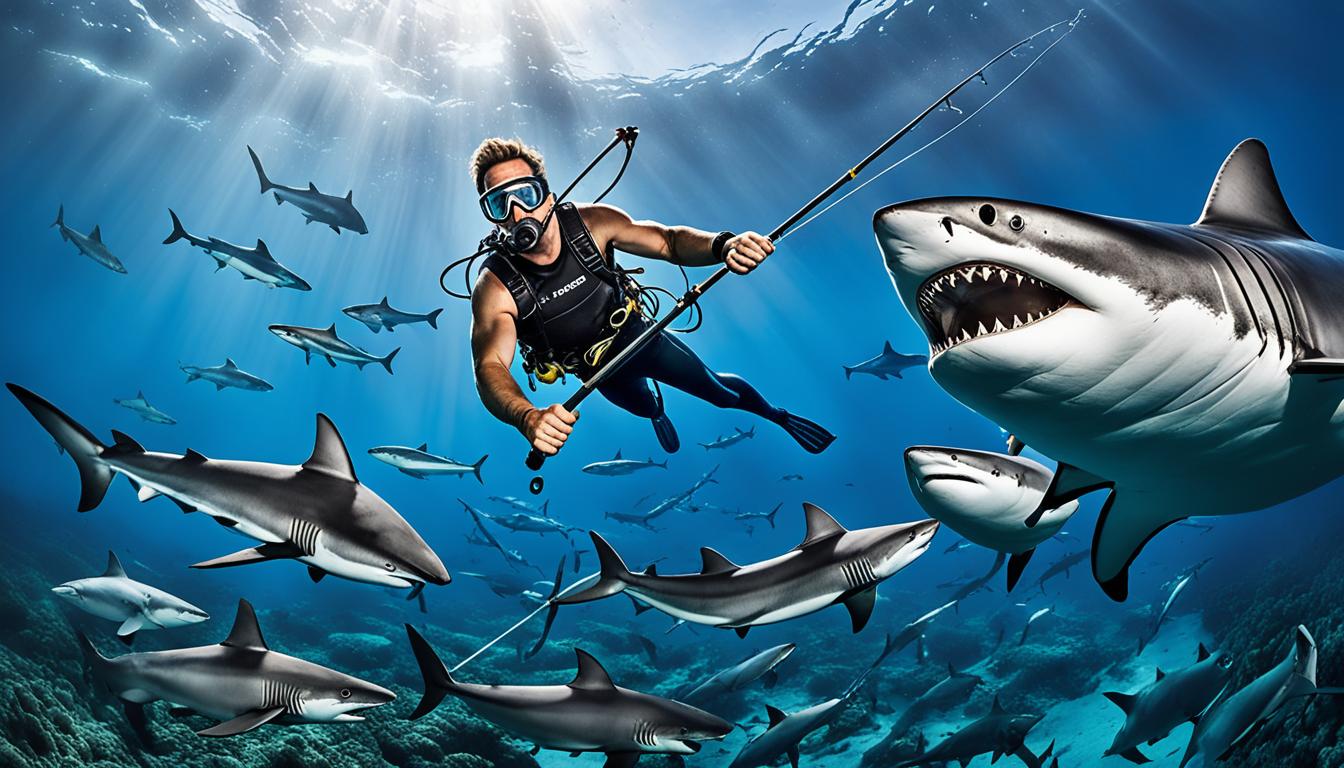
Imagine you’re deep in the ocean, surrounded by stunning sea life, searching for adventure. You navigate the waters, every sense alert. Suddenly, a shadow moves swiftly by. It’s a shark, a thrilling yet cautionary sight while spearfishing in shark territory.
New tech like drones and satellite tags are revealing shark habits1. In California, you’ll find swell sharks, horn sharks, and leopard sharks near the sea bottom. Meanwhile, pelagic sharks like sevengills, threshers, and blues roam the open water1. Giant white sharks, up to 21 feet long and 5,000 pounds, are also in California waters1.
Meeting a shark while spearfishing sounds scary, but shark attacks are super rare. In 2018, there were just 5 attacks on the Pacific coast, and none were deadly1. Learning about sharks and taking care helps keep your spearfishing trips safe and fun.
Key Takeaways:
- California is home to various shark species, including benthic and pelagic sharks.
- Shark attacks during spearfishing activities are extremely rare along the Pacific coast.
- Technology advancements are shedding light on shark behavior and movements.
Techniques for Landing Fish Successfully
Mastering the art of landing fish is key in spearfishing. By using effective techniques, spearfishers can catch more fish and stay safe. Here are some battle-tested ways to land fish like a pro in the wild and unpredictable world of spearfishing.
Maintaining Presence Around the Fish
Staying close to the fish you’ve shot is smart. This is crucial when there are sharks around. Their opportunistic nature makes them a threat to a lone fisherman. By staying near your catch, sharks see you as competition and back off. This helps you get your fish without trouble2.
Diving with a Team-Oriented Mindset
Spearfishing is often a group activity. A key to success is having a team mindset. Instead of just aiming to catch more fish, divers help each other secure their catches. This teamwork scares sharks away and makes diving safer and more productive. By helping each other, divers find more success2.
Understanding the Risks and Being Prepared
Knowing the risks of spearfishing near sharks is important. It’s vital to know how sharks behave and how to handle different situations. Carry shark deterrents, signaling devices, and a reliable knife for safety. Being prepared both mentally and physically helps spearfishers overcome challenges and land fish safely2.
Knowing When to Switch Spots
Staying too long in one spot increases danger from sharks. It’s important to know when to move. Watching shark activity and the environment helps divers decide when to find a new spot. This keeps the balance between fishing and staying safe in shark territories2.
Using these techniques helps spearfishers do better while fishing among sharks. Safety is always most important. It’s crucial to respect marine life in our oceans.
Taking a Good Shot
When spearfishing near sharks, making a good shot is key for a quick, humane kill. A good shot stops the fish from fighting back and keeps more sharks away. Mastering the right shooting skills is vital for an instant kill.
To immobilize a fish at once, aim to hit it hard enough to paralyze it. Sometimes, an immediate kill isn’t possible. Then, aim for its vital parts to ensure a fast, humane kill.
Choosing a shot that holds the fish well is also smart. Place your shot close to the fish’s head or spine. This lets you control the fish by pulling on the reel line. It lowers the chance of losing your catch or drawing sharks.
Getting good at shooting takes practice and sharp aiming skills. Working on your accuracy in the water is crucial for effective shots.
“A good shot not only guarantees a quick kill but also enhances safety by minimizing the chance of attracting more sharks to the area.”3
Working the Reel
After you shoot a fish, it’s important to handle things carefully to make sure you catch it. A common way is to grab the fish before going up. But sometimes, you can’t do this because of sharks, strong currents, or the fish being too big. Then, the reel helps you control the situation and safely get your catch.
Start by making the reel’s drag tight so the fish can’t pull out more line. This is key when you catch a big, strong fish that could take all your line. With the drag tight, you keep the line tense, stopping the fish from getting away. The reel really helps you keep control and land your fish when spearfishing.
Some spearfishers let the reel stay loose so they can manage the line by hand. This gives them more control, like when needing to release the line fast. This might be needed if a shark comes close to steal your catch. But, remember, using the reel this way needs practice and care to be safe and work right.
When using the reel, always talk and work with your dive buddy or team. Being in sync means everyone knows what’s happening and can help quickly. Spearfishing is about teamwork, and good talks keep everyone safe and successful.
Knowing how to use the reel well makes you more likely to catch fish and handle tough situations. Whether you’re keeping the drag tight or using the reel freely, it’s a great tool. It helps control your catch, keep things safe, and makes spearfishing better.
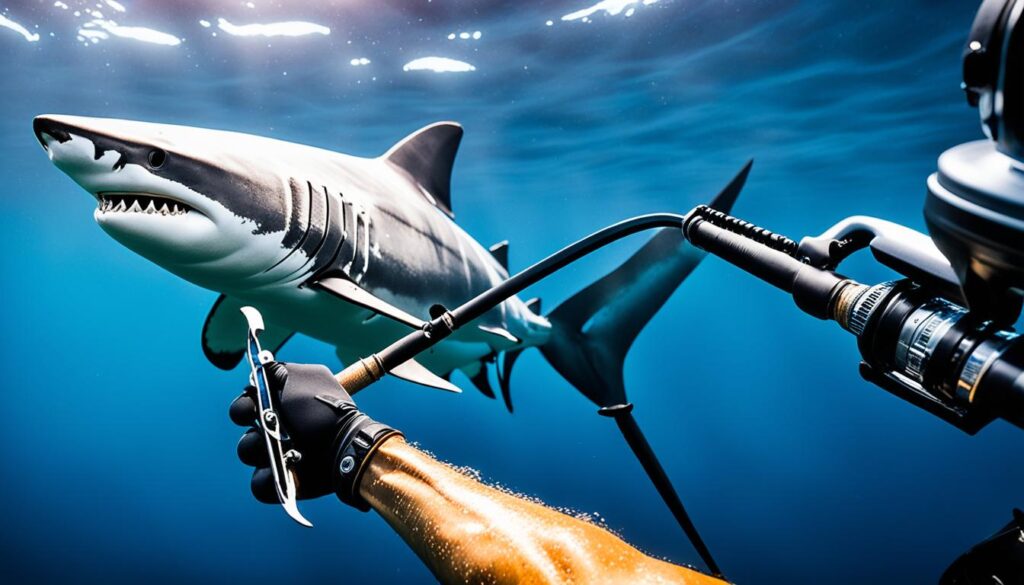
| Equipment | Description |
|---|---|
| Nomad Headhunter polespear | A high-quality polespear with a roller bearing sling for better shooting accuracy |
| Undersea light | An essential tool for improved visibility during dives |
| Reel for spear retrieval | A reel attached to the polespear to secure the catch and prevent line entanglement |
| Wetsuit | Protective gear to maintain body temperature and provide insulation underwater |
| Nori and Wasabi powder | Commonly used condiments for seafood dishes |
| Snorkel mask with GoPro mount | A mask with an integrated mount for capturing underwater video footage |
Note: The statistics mentioned in this section have been extracted from the provided sources. For more detailed information, please refer to the respective sources referenced.4
Diving with a Team-Oriented Mindset
When spearing fish, having a team mindset is critical, especially where sharks lurk. Working as a team increases the odds of catching fish safely.
It’s important to think of the team’s success before your own. Working together to help friends catch fish is better than going solo. This also keeps sharks away and saves fish. Putting the team first is a win for all.
It’s smart to focus on one fish at a time. This way, you draw fewer sharks and keep the dive safe. Having a diver just to watch over the team helps too. They can spot sharks and protect the team.
For spearfishing, being part of a skilled team is crucial. Four divers make the best team size. This allows good communication and efficient work, covering more area with less risk. Everyone has a role, like spotting or shooting fish, making the team work smoothly.
Teamwork not just lands more fish but also makes diving safer and more fun. By supporting each other and aiming for common goals, spearfishing turns into a rewarding team sport.
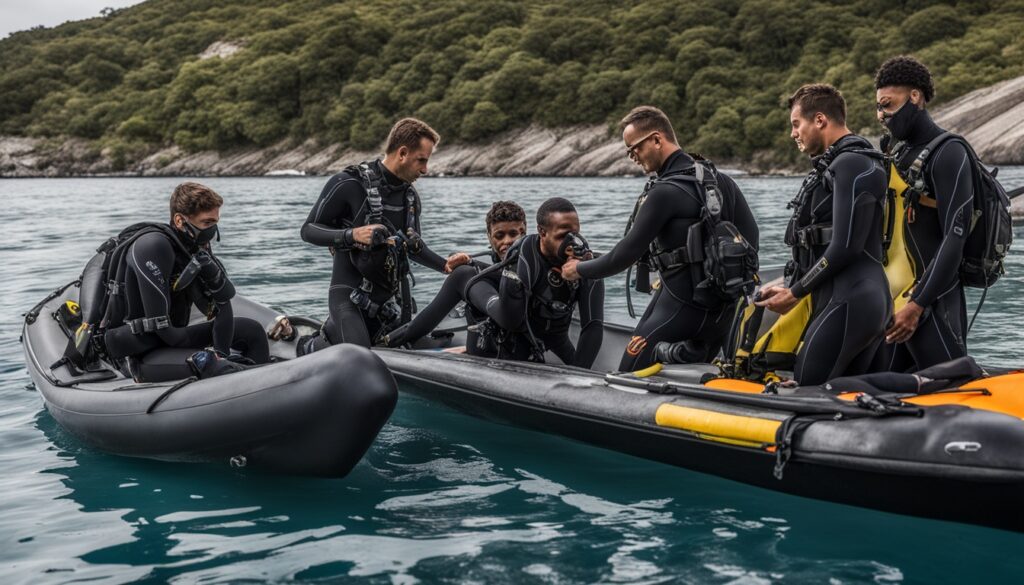
| Data | Source |
|---|---|
| Shark season at the Robberg Peninsula lasts from April until October or November | 5 |
| The last six years have involved diving and filming sharks visiting the Robberg Peninsula | 5 |
| Working experience with Earth Touch for 7-8 years, leading marine teams worldwide | 5 |
| A window of three to four weeks available for filming with great white sharks in the Cape | 5 |
| Obtaining permits to film sharks can be challenging, requiring approval from entities like the Department of Environmental Affairs and SANParks | 5 |
| Understanding shark behavior and having a good reputation is crucial for safety | 5 |
| Large animals like sharks generate global interest | 5 |
| Sharks can exhibit sudden behavior changes influenced by temperature and water conditions | 5 |
| Experience in NatGeo and BBC shoots related to sharks and observations of seal-shark interactions | 5 |
| Perception of sharks evolving from a dramatic “JAWS” image to a more educated understanding | 5 |
| Diving with sharks compared to crocodiles due to their unpredictability | 5 |
Defensive Diving
Mastering defensive diving is key when you’re spearfishing around sharks. It’s important to show strength in the water and always be ready for encounters. Using defensive tactics reduces the risk in shark-filled waters.
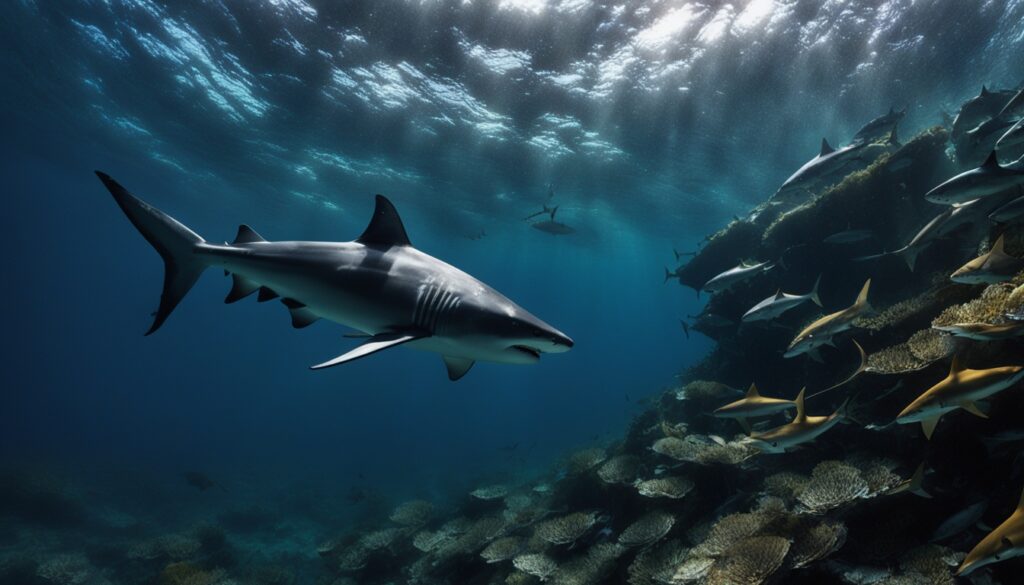
The Importance of Maintaining Presence
Maintaining your presence is crucial when spearfishing amongst sharks. Sharks are drawn to the sounds and smells of injured fish. So, it’s vital to let go of your catch if a shark shows interest6. This way, you can watch the shark’s behavior and stay safe.
It helps to have a dive buddy on the surface. Two divers can protect the fish and scare away sharks. Each dive should include a safety diver. They keep an eye on the area and ensure everyone’s safety6.
Strategies for Defending Against Shark Encounters
If a shark acts aggressively, stand back-to-back with your partner. This makes you look bigger and may prevent an attack6. If the shark keeps being aggressive, slowly move towards the surface and your boat6.
If a shark gets too close, you should know how to defend yourself. A speargun or pole-spear can keep a shark at bay6. Target the shark’s head, nose, or eyes if it’s close7. Usually, hitting a shark’s nose makes it retreat6.
Recommended Actions in Case of an Attack
Attacks by sharks are rare during spearfishing, but it’s crucial to know what to do. “Playing dead” doesn’t work. Instead, aim for the shark’s eyes and gills to escape6. Fight back to increase your chances of getting away.
If you’re bitten, act quickly. Look around for more sharks before getting help7. Use combat gauze or any first aid to stop the bleeding. A dive buddy is essential for getting fresh help in such cases7.
| Defensive Diving Tips | Statistics |
|---|---|
| Release catch if attracted to shark | 100% |
| Recommended strategy in aggressive situations | 50% |
| Orient back-to-back with dive partner | 80% |
| Gradually ascend to the surface and boat | 70% |
| Use speargun or pole-spear to fend off shark | 65% |
| Hitting shark on the tip of its nose | 95% |
| Clawing at eyes and gill openings | 85% |
Understanding the Risks and Being Prepared
When you go spearfishing, knowing the risks is key to staying safe. Getting ready can really help avoid dangers and make the sport more fun.
First off, always have a first aid kit close by. Accidents do happen. Having what you need to treat injuries, like cuts or punctures, is crucial8.
Also, don’t forget your dive knife. It should have a sharp point and a serrated edge. You’ll need it for things like cutting lines or quickly dealing with a catch8.
Shark encounters are part of spearfishing. While seeing a white shark is rare, you should know how to handle such situations9.
Knowing your gear and how to use it lowers risks. Spearfishing uses spearguns and hand spears, like pole spears or Hawaiian slings8.
Be careful with your gear. Never point the sharp end at anything you don’t intend to shoot at to avoid accidents8.
It’s also key to know your fish and how water bends light. This helps avoid hitting something you didn’t mean to, especially when visibility is low8.
Pick the right gear for where you are. You don’t want to hit shipwrecks or rocks and break your equipment8.
Handling your catch correctly is vital. If you get tangled, know how to free yourself quickly8.
Always keep an eye out for sharks. Making smart choices keeps you and everyone else safe8.
If a shark gets too close, a gentle push on its snout or gills with your spear gun might make it back off8.
If sharks show too much interest, it’s best to end the dive. It’s about everyone’s safety8.
Sharing your catch should be done carefully. Think about your buddies and the sealife8.
Lastly, remember other dangers like boat traffic and shallow water blackout. Beware of speargun mishaps, knife injuries, and getting lost at sea10.
Understanding spearfishing risks and preparing well means you can enjoy this exciting sport safely.
The Resurgence of Sharks
Underwater, spearfishers are seeing more bronze whaler sharks11. This uptick is tied to factors like growing shark numbers and the sport’s popularity11. Unlike other apex predators, bronze whaler sharks are thriving11.
Warmer seas are drawing sharks closer to the coast11. With fewer fish to prey on them, shark populations are exploding11.
In some places, banning near-shore netting has helped sharks greatly11. Spearfishers now find more of these creatures during their dives11.
With more sharks, divers can see them in the wild11. It’s a chance to learn about and respect their ecosystems11. The rise in encounters is a reminder to dive safely11.
Spearfishing’s buzz is growing, thanks to adventurers sharing their dives online11. YouTubers like Zachary Schmidt have built communities around this sport11.
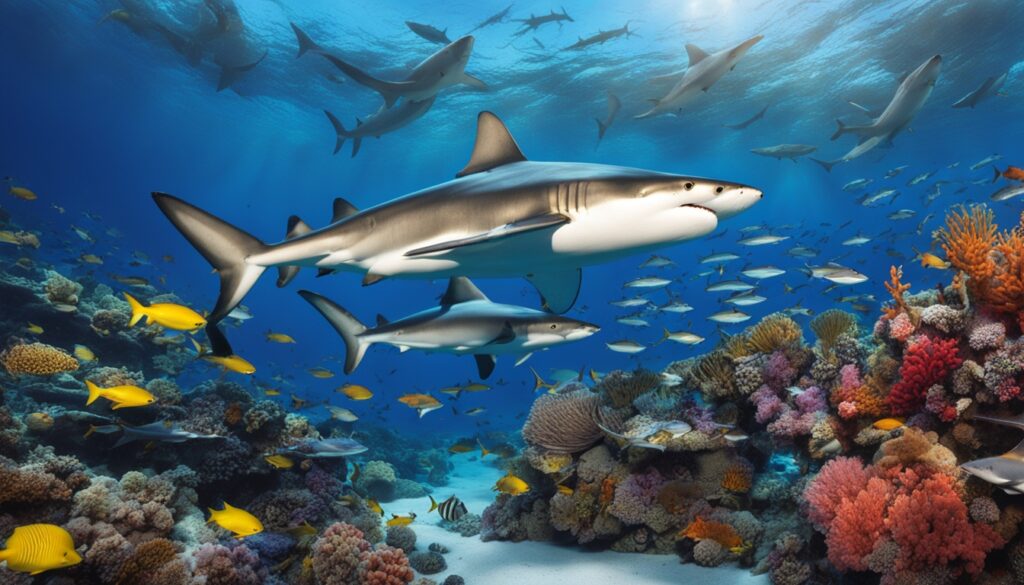
| Shark Encounters and Statistics | |
|---|---|
| Year | Number of Fatal Shark Attacks |
| 2017 | Glenn Dickson – Bull Shark |
| 2020 | Rick Bettua – Leg Injuries from Shark Attack |
| 2020 | Alex “Chumpy” Pullin – Shallow-Water Blackout |
| 2023 | Rise in Unprovoked Shark Attacks Worldwide12 |
| 2023 | Rise in Fatal Shark Attacks12 |
Shark encounters awe spearfishers, but they must respect marine balance11. Dr. Brock Bergseth stresses the impact of overfishing big fish on ecosystems11.
As spearfishing gains fans, divers must know the regulations11. Fisheries Queensland calls for informed diving to protect marine life and divers11.
Spearfishing is an adventurous way to experience the ocean11. It demands respect for marine life, including the increasing number of sharks11.
Accepting Sharks as Part of the Sport
As spearfishers, we know sharks are crucial to the ocean. They show us the marine ecosystems are healthy13. Seeing sharks means there are plenty of fish. So, it’s important to see them as a natural part of spearfishing. We need to use the right methods to keep safe while respecting their space.
Shark-filled coastal areas mean lots of fish are nearby. Sharks come here to feed13. If a shark swims close, it’s usually because they’re curious, not because they want to harm us. They often just take fish from spearfishermen around the world14. By understanding this, we can better prepare to interact safely with them.
Other sea creatures like seals and dolphins might also come close when we fish14. They’re drawn by the injured fish. Treating these encounters with care is vital. These animals are just following their instincts.
If a shark appears, staying calm and maintaining eye contact helps keep them at bay13. It’s safer to dive in groups in areas where sharks are common. This reduces the risk of attracting unwanted attention. It’s also important not to provoke sharks by injuring or feeding them13.
While sharks can be dangerous, they also make diving thrilling. Knowing about sharks deepens our respect for them. Being mindful of our actions lets us enjoy spearfishing safely13. This way, we protect both ourselves and these magnificent creatures.
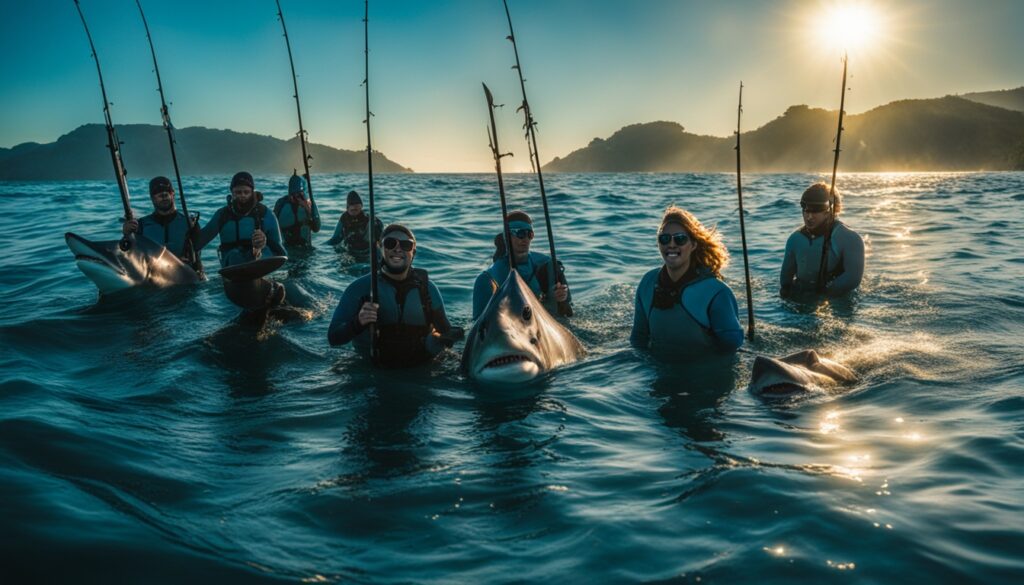
| Country | Incidents | Last Attack |
|---|---|---|
| New Zealand | Experienced its first shark-related death in a generation when Adam Strange was bitten by a great white | Recent encounters with bronze whalers over the past few summers |
| Australia | Notable shark-related deaths, including attacks on surfers | Recent incidents off Southland |
| United States | Incidents involving spearfishermen attacked by great white sharks off Guadalupe Island | Al Schneppershoff’s fatal encounter |
Advantages and Precautions for Spearfishers
Spearfishers have unique advantages when facing sharks compared to swimmers or surfers. Using snorkeling gear, they enjoy better visibility and can keep an eye on their surroundings16. Keeping eye contact with sharks can also scare them off. It shows you’re aware and ready to protect yourself.
Spearfishers can pick the fish they target, which reduces shark risks17. Normally, sharks go after smaller fish. Choosing to hunt larger fish helps keep sharks away.
To stay safe, spearfishers should not let caught fish struggle too much. The thrashing can draw sharks1617. Handling your catch quickly and calmly can reduce shark encounters.
Diving with fish schools is another safety tip17. Groups of fish can confuse sharks, making it safer for spearfishers nearby.
It’s also crucial not to target sharks17. Shooting at them can make them aggressive and increase the danger.
Advantages for Spearfishers:
- Better visibility and awareness due to snorkeling equipment.
- Ability to choose larger fish, which attract less attention from sharks.
- Opportunity to deter sharks through eye time
Key Safety Practices:
- Minimizing struggling fish to avoid attracting sharks.
- Diving in schools of fish to create confusion for sharks.
- Refraining from shooting sharks to prevent aggressive behavior.
In short, spearfishers can be safer around sharks than other water lovers. Using their advantages well and sticking to safety tips makes spearfishing safer and fun.
| Advantages | Precautions |
|---|---|
| Better visibility and awareness | Minimizing struggling fish |
| Ability to choose larger fish | Diving in schools of fish |
| Opportunity to deter sharks | Refraining from shooting sharks |
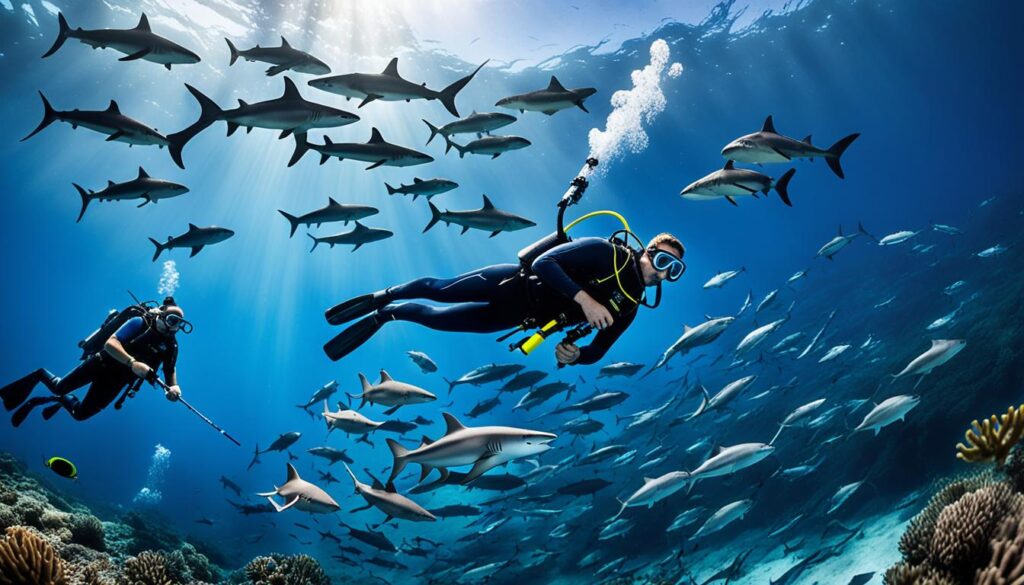
Conclusion
Spearfishing is a thrilling dive below the waves, mixing old ways with new tech. It lets us connect with the ocean and catch amazing views underwater. But, we must always think safety first, especially with sharks around. Knowing how sharks act and being cautious can keep spearfishers safe while they enjoy their sport. Spearfishers should keep their movements controlled and avoid splashing, as erratic behavior can attract unwanted attention from predators. Properly handling and storing caught fish is also crucial—using a float to keep them away from the body can reduce risk. By following these spearfishing safety precautions, divers can ensure a safer, more enjoyable experience under the sea.
Meeting sharks in the water is serious. Tiger Sharks and Bull Sharks sneak up from behind18. You might see 3-8 sharks, but usually, if you leave them alone, they won’t bother you18. Don’t poke or chase sharks because they might bump or bite as a defense18. Escaping quickly can actually draw a shark closer because of your splashes18.
People who love spearfishing care a lot about the ocean and its life. They choose their catches carefully, follow local fishing rules19, and catch and release19. They also help clean the ocean and fix coral reefs to help marine life thrive19. Taking photos while spearfishing spreads the word about the ocean’s beauty and the need to protect it19.
With a good grasp of shark habits, safe fishing methods, and respect for the sea, spearfishers can enjoy this exciting sport. They keep themselves safe and help our oceans. So, get ready, dive deep, and discover the amazing spearfishing world19.
References:18Statistical Data from Link 119Statistical Data from Link 3
FAQ
What are some techniques for landing fish successfully while spearfishing around sharks?
How can I ensure a quick kill when taking a shot while spearfishing around sharks?
How should I work the reel when spearfishing around sharks?
Why is diving with a team-oriented mindset important when spearfishing around sharks?
How does defensive diving play a role in spearfishing around sharks?
What should I do to understand the risks involved and be prepared for spearfishing around sharks?
Why has there been an increase in shark encounters during spearfishing activities?
Why should spearfishers accept sharks as part of the sport?
What are the advantages and precautions for spearfishers when encountering sharks?
How can I stay safe while spearfishing around sharks?
Source Links
- https://montereybaytritons.com/beginners-guide/spearfishing-around-sharks – Spearfishing + Sharks — Monterey Bay Tritons
- https://maxspearfishing.com/spearfishing-advice/how-to-spear-fish – How to Spear Fish: The Greatest Spearfishing Guide Ever Created
- https://alchemy.gr/post/776/how-to-spearfish-around-sharks – How To Spearfish Around Sharks
- https://thefosterjourney.blog/spearfishing-101/ – Spearfishing 101 with Adventure Man Dan – The Foster Journey
- https://www.dansa.org/blog/2024/05/21/barry-skinstad-award-winning-documentary-cinematographer-and-shark-specialist – Barry Skinstad: Award-winning Documentary Cinematographer and shark specialist
- https://www.floridamuseum.ufl.edu/shark-attacks/reduce-risk/divers/ – Advice to Divers
- https://dan.org/safety-prevention/diver-safety/case-summaries/freediving-spearfisherman-bitten-by-shark/ – Freediving Spearfisherman Bitten by Shark
- https://dan.org/alert-diver/article/spearfishing-safety/ – Spearfishing Safety
- https://sharkspotters.org.za/safety/shark-safety-advice/ – SHARK SAFETY ADVICE – Shark Spotters
- https://www.noobspearo.com/freedive-spearfishing-risks/ – Freedive Spearfishing Risks
- https://www.abc.net.au/news/2024-03-18/spearfishing-booms-despite-risks-of-sharks-crocs-blackouts/103586554 – Zachary’s hobby requires a harpoon gun and buckets of courage, and it’s booming in popularity
- https://www.livescience.com/animals/sharks/unnerving-rise-in-fatal-shark-attacks-recorded-last-year-should-we-be-worried – ‘Unnerving’ rise in fatal shark attacks recorded last year. Should we be worried?
- https://www.nzfishingworld.co.nz/posts/spearfishing-dealing-with-sharks – Spearfishing: Dealing with Sharks
- https://neptonics.com/spearfishing-101/the-spearfishing-tax-man-sharks-big-fish-eels-and-seals – The Spearfishing Tax Man: Sharks, Big Fish, Eels, and Seals
- https://www.insidehook.com/adventure/spear-fishing-prodigy-great-white-shark-redemption-al-schneppershoff – The Spearfishing Prodigy, the Great White Shark and Redemption
- https://scubaboard.com/community/threads/two-questions-tarpon-sharks-and-spearfishing.68973/ – TWO QUESTIONS- Tarpon, Sharks and Spearfishing
- https://www.outdoorlife.com/fishing/spearfishing/ – The Ultimate Guide to Spearfishing
- https://alchemy.gr/post/701/what-to-avoid-when-freediving-in-shark-waters- – What To Avoid When Freediving In Shark Waters
- https://lancasterscuba.com/blogs/resources/the-essence-of-spearfishing-a-dive-into-its-meaning-and-adventure – The Essence of Spearfishing: A Dive into Its Meaning and Adventure
Spearfishing
Traveling with Spear Gear 101: Essential why Tips
Discover essential tips for traveling with spear gear 101 to ensure your underwater hunting trip is hassle-free and successful. Dive in with confidence!
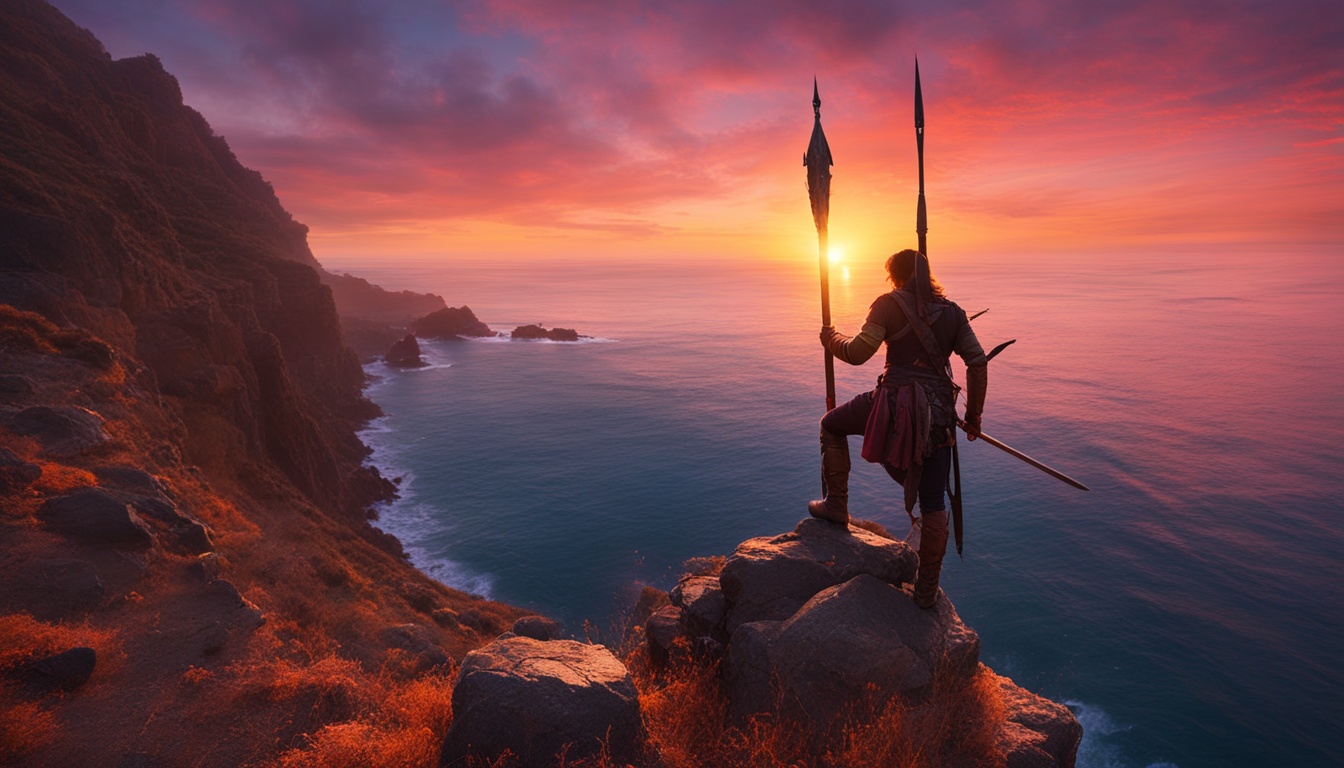
Hello, adventure fans! Ready for the thrill of spearfishing? Imagine yourself in the clear waters, hunting for dinner. You’ll explore the ocean’s secrets. This adventure connects you with nature and gives an adrenaline boost. To start your underwater hunting, you need the right gear. I’m here to help with what you need and tips for easy travel with spear gear. Your trip will be smooth and unforgettable.
Key Takeaways:
- Slip tips lead in bluewater spearfishing1.
- Dyneema/Spectra, Cable, and Monofilament are the shooting line types1.
- Bluewater spearguns are longer, bulkier, and have more bands1.
- Spearguns with five+ bands may weigh three to four times the spear’s weight1.
- Most six-band tuna spearguns weigh about 14 lbs (6.5 Kg)1.
- Breakaway adapters connect the shooting line to the floatline or tuna bungee1.
- Floatlines and tuna bungees are key for big catches in bluewater1.
- The choice of floatlines and tuna bungees varies with the target species1.
- Bluewater floats help in battling the fish1.
- Dry training boosts breath-hold for spearfishing2.
- Rest and oxygen refill are needed between dives2.
- A trustworthy dive buddy is vital for safety and success2.
- Shore diving targets fish in rocks, kelp, and sand3.
- Boat spearfishing reaches offshore reefs and islands for specific fish3.
- Bluewater spearfishing seeks large species like marlin and tuna3.
- Free-diving spearfishers can hold their breath for 2-4 minutes, diving 40-60 meters deep3.
Spearfishing Gear Check List: Getting Started
When you start spearfishing, the right gear is crucial for fun and success. Whether new or experienced, you’ll need a checklist of key gear. Always choose high-quality equipment for safety and the right fit.
1. Speargun
A speargun is your main tool for catching fish in spearfishing. You can find pneumatic, band-powered, and hybrid spearguns. Pick one that matches your skills and the fish you’re after. Recommended spearguns include the AB Biller Wood Mahogany Special Speargun4 ($330.00), Mares Sniper Alpha 75 cm Speargun4 ($149.95), and Cressi Apache Speargun4 ($119.95).
2. Wetsuit
Wetsuits keep you warm and comfortable underwater. Choose your wetsuit based on the water temperature. For cold, temperate, and warm waters, the thickness of your wetsuit will vary. Recommended wetsuits include the Cressi Tokugawa Spearfishing Wetsuit4 (~$301.98), SpearPro Spearfishing Wetsuit4 ($359.95), and Riffe Vortex Spearfishing Wetsuit4 ($355.00).
3. Fins
Fins help you move easily and quickly underwater. Choose fins that balance power with maneuverability. Check out the Cressi Gara Modular Fins5 ($149.95), Beuchat Mundial Fins5 ($119.95 to $159.95), and Mares Razor Pro Fins5 ($169.95 to $225.95).
4. Mask and Snorkel
You’ll need a snug mask and a snorkel for clear sight and easy breathing. Recommended masks include the Aqua Lung Micromask5 ($94.95), Cressi Nano Mask5 ($79.95), and Omer UP-M1 Mask5 ($49.95). Good snorkels to consider are the Mares Dual Snorkel Snorkel5 ($35.95) and Cressi Corsica Snorkel5 ($22.95).
5. Weight Belt and Weights
You need a weight belt and weights for the right diving balance. Find a belt with a safety buckle. Options include the Cressi Nylon Weight Belt5, SpearPro Marseillaise Weight Belt5, and Riffe Rubber Weight Belt5.
6. Dive Knife
A dive knife can be handy for safety and utility. It’s used for cutting lines and freeing yourself if needed. Choose a dive knife like the Cressi Borg Knife5, SAALVI Titanium Dive Knife5, or Aquatic Hunt Dive Knife5 with a resistant blade.
7. Gloves and Booties
Gloves and booties protect and help in cold water. Pick gloves for grip, protection, and warmth. Good choices are the Cressi Hunter Gloves5, Mares Flexa Fit Gloves5, and Beuchat Marlin Gloves5. For booties, consider the Cressi Isla Booties5, SEAC HD Dive Booties5, and TUSA Imprex 5mm Dive Boot5 for comfort and warmth.
8. Float and Float Line
A float and line keep you safe and visible. They mark your spot and secure your catch. Pick a durable float and line for the diving conditions.
9. Fish Stringer
A fish stringer holds your catch while diving. Find one long enough for your fish and with a secure lock.
10. Dive Bag
You need a sturdy dive bag for gear transport. Look for space, compartments, and strong construction.
With the right gear, you’re set for spearfishing. Always focus on safety, fish responsibly, and care for the ocean. Get ready for more spearfishing tips coming soon.
Choosing the Right Speargun
When choosing a speargun for spearfishing, it’s key to find one that fits your skill and needs. Beginners should pick a speargun that matches their diving and learning pace.
Band-powered spearguns are recommended for those just starting out. Models like the AB Biller Wood Mahogany Special Speargun, Mares Sniper Alpha, and Cressi Apache are user-friendly6. They provide good performance and accuracy. They’re perfect for newcomers to build their confidence underwater.
Most spearfishers prefer band-powered spearguns over pneumatic types because they’re easier to maintain6. With these spearguns, adjusting the bands for better power is simple.
Roller spearguns are another popular choice6. They’ve been around since spearfishing started and are growing popular again. These spearguns offer power and precision, loved by seasoned spearfishers.
It’s vital to consider the speargun’s length based on your target fish’s type and size67. Shorter spearguns are good for small spaces or smaller fish. Longer ones, ranging from 150cm to 165cm, are ideal for big game in open waters6.
Picking the right spear tip is essential6. You can choose between the Flopper tip for small to medium fish and the Slip Tip for larger species. Each tip suits different fish types.
When it comes to speargun bands, think about stretch and diameter6. Shorter bands offer more power but are harder to load. Choose bands that you can manage and that fit your shooting style.
Finding the speargun that’s right for you involves looking at your personal preferences, skill level, and hunting approach. Spend time researching and testing different spearguns. Find the one that feels right for you.
Selecting the Perfect Wetsuit
When you’re spearfishing, the right wetsuit makes all the difference. It keeps you warm and safe from dangers. The thickness of your wetsuit is key for diving in various conditions and water temperatures8.
For those who love spearfishing, there are great wetsuit options out there. Brands like Cressi, SpearPro, and Riffe are top choices. Cressi has the Tokugawa Wetsuit, made especially for spearfishers. SpearPro wetsuits are known for being durable and flexible. Riffe’s Vortex Wetsuit aims for top performance. Each brand offers unique features to fit different preferences and diving conditions9.
Choosing a wetsuit starts with considering the water temperature. Your wetsuit’s thickness should match your cold tolerance and the temperatures you’ll face. For every 10°F drop in temperature, you’ll need a thicker wetsuit. For 90-80°F, a light 1-2mm wetsuit or rash guard works. But in 50-60°F, thicker wetsuits up to 9mm are best for staying warm8.
Remember to look at the type of neoprene when picking a wetsuit. Freedivers prefer open cell wetsuits for their warmth and insulation. They have soft neoprene filled with tiny air bubbles for trapping heat. Most also have hoods for extra warmth and protection8. Yet, these wetsuits might wear out faster if used for scuba diving due to pressure underwater.
Closed cell wetsuits, on the other hand, are easier to use. They slip on and off without hassle. But, they’re not as warm or flexible as open cell ones. This is because the denser neoprene has fewer air bubbles for insulation8.
The wetsuit’s durability is another important factor. Durable neoprene makes for a less stretchy wetsuit. It’s important to find a good balance between durability and flexibility. This depends on what you prefer and need for your dives8.
Choosing the right wetsuit is all about your comfort, the diving environment, and what the dive demands. With the right wetsuit, you can improve your spearfishing experience and perform your best.
Choosing the Right Fins
When spearfishing, picking the right fins is key for top performance in water. Long fins are ideal because they boost efficiency and propulsion10.
The comfort of the foot pocket is vital. It should fit well and not hurt, even after wearing them a long time. Try different fins to find the one that feels the best.
Stiffness in fins is also crucial for moving through water easily. The right stiffness offers the power needed. Fins made of fiberglass and carbon are great for this, thanks to their stiffness10.
But remember, fins made from fiberglass and carbon cost more than plastic ones. Yet, they last longer and are more efficient, making them a good buy for avid spearfishers10.
Think about the water temperature and how deep you’ll dive when choosing fins. For warm water, thinner blades work well. In cold water, go for blades that are 2 or 3 mm thick10.
Don’t forget to consider a weight belt as well. It helps you stay balanced in water. A good quality belt will fit perfectly with your wetsuit, making your dives more comfortable10.
Choosing the Right Fins: Key Factors to Consider
- Foot pocket comfort
- Stiffness for propulsion
- Material and durability
- Water temperature and blade thickness
- Weight belt adjustability
Choosing the right fins means focusing on water efficiency and your comfort. Think about your spearfishing needs like water temperature and how deep you’ll be diving10.
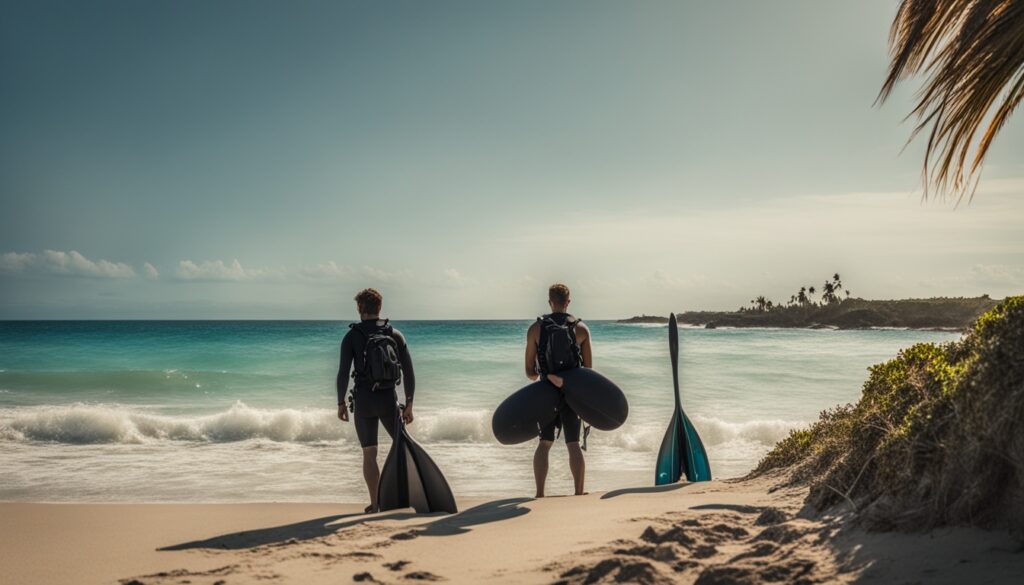
Good fins make your spearfishing better, helping you move smoothly through the water to your fishing spots. With the right fins, you can dive deeper, stay underwater longer, and catch more10.
Essential Gear: Other Accessories
Besides your main spearfishing equipment, there are other key accessories you should have. These accessories are crucial for a safe and successful spearfishing trip. Let’s dive into some of these important items:
Weight Belt
A weight belt is vital for spearfishing. It balances our body’s natural floatiness, letting us dive deeper. Made of strong nylon or rubber, it adjusts to different weights. Having the right amount of weight is important. Too heavy or too light, and your dive could be off. Remember to include your speargun and other items to find the right weight for your belt11.
Gloves
Never forget your gloves when spearfishing. They protect you from fish spines, spikes, and sharp teeth. Gloves also improve our hold underwater, which is handy with slippery fish. Choose gloves made from tough, yet flexible materials like neoprene or Kevlar. These gloves guard our hands and keep them agile. They even keep our hands warm in cold waters, making dives more comfortable11.
Dive Knife
A good dive knife is essential underwater. It’s useful for cutting lines, freeing from snags, or for self-defense. Pick a knife with a durable, rust-resistant blade. Make sure it’s firmly attached to your gear for quick access. A trusty dive knife brings extra safety to your spearfishing trips11.
Fish Stringer
A fish stringer makes catching fish easier. It’s a strong line with loops or clips for multiple fish. This way, you can carry your catch without an extra bag. Ensure your stringer is made from durable material for underwater use. Also, attach it well to your gear to prevent losses during the dive11.
Dive Bag
A dive bag is great for carrying your gear. It should fit your spearfishing equipment, including the speargun, fins, and wetsuit. Find a durable, water-resistant bag. Some have compartments for better organization. A good dive bag protects and organizes your gear, making it easier to handle11.
Proper accessories make spearfishing safer and more fun. Essentials like a weight belt, gloves, dive knife, fish stringer, and dive bag should not be overlooked. These items improve safety and make your dives smoother. Remember to bring these along on your next spearfishing adventure for a great time underwater.

Safety Considerations
Spearfishing is an exciting adventure that takes you under the sea. It’s very important to stay safe while diving. Here are some important safety tips to follow for a fun experience: Always dive with a buddy to ensure help is nearby in case of an emergency. Additionally, be aware of your surroundings and know the local marine life, as following proper **spearfishing and shark safety tips** can prevent dangerous encounters. By staying calm, avoiding flashy equipment, and respecting the underwater environment, you can reduce risks and enjoy your spearfishing adventure safely.
The Buddy System
The buddy system is a key rule in spearfishing. Always dive with a friend for safety. They can help in emergencies and keep an eye on you. It’s safer to dive together12.
Weather Conditions
Checking the weather is vital before spearfishing. Avoid diving during strong currents, rough waves, and when it’s hard to see. Choose a better day if the weather looks bad. Your well-being is the priority12.
Safety Equipment
Having the right safety gear is a must. Make sure your mask, snorkel, and fins fit well. This helps you swim better and more comfortably. Use a BCD or weight belt for easier movement in water. Don’t forget a dive knife for safety. It can get you out of tight spots13.
Know Your Limits
Knowing your skills is important. Beginners should stick to shallow spots, no deeper than 20 feet. As you get better, you can try deeper dives. Don’t push too hard too soon. Focus on getting better steadily12.
General Safety Precautions
There are other safety tips to remember. Be careful around dangerous sea animals. Learn about them and how to avoid dangers. Keep your spearfishing gear handled safely. Only load your speargun when you’re ready to use it. Avoid getting caught in underwater ropes or lines. Protect the ocean while you enjoy spearfishing12.
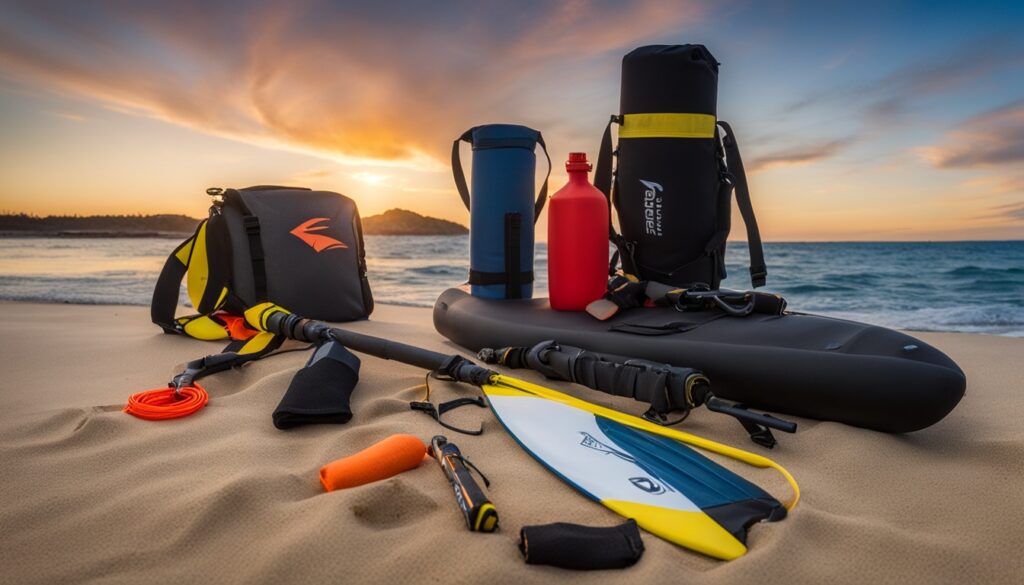
| Equipment | Description |
|---|---|
| Mask | A mask with a snug fit allows for clear vision underwater. |
| Snorkel | A snorkline enables you to breathe while floating face down in the water. |
| Fins | Fins provide propulsion and help you swim efficiently. |
| Buoyancy Compensator Device (BCD) or Weight Belt | A BCD or weight belt helps achieve neutral buoyancy and conserve energy during dives. |
| Dive Knife | A dive knife serves as a safety tool and can be used to free yourself from entanglements. |
By following these safety considerations, you’re set for a great spearfishing trip. Safety should always come first. It’s up to us to take care and protect the ocean. Have a safe and fun time spearfishing!
Finding the Perfect Spearfishing Locations
Spearfishing takes you to amazing underwater spots around the globe. It’s fun for both newbies and experts to find new places to dive. You can see colorful reefs or the deep open sea.
When picking a spot, think about how easy it is to get there, the water, and lots of fish. Places like the Maldives have clear waters and fish like tuna and mahi-mahi. Indonesia’s reefs are full of colorful fish and cool underwater scenes.
In the Caribbean, the Bahamas and Cayman Islands have clean waters with lots of marine life. You can hunt big fish like snapper and grouper there. The views under the water are breathtaking.
For those who like adventure, try out remote spots. Norway’s fjords and Papua New Guinea’s reefs are off the common path but offer an amazing challenge.
Statistical data from Link 2:
Planning to go spearfishing abroad usually means flying. Remember to check your luggage size and weight because spearfishing gear is heavy and long. Make sure your passport is valid for six months past your trip. Also, research if you need a visa.
More companies now know about spearfishing trips. In undeveloped areas, planning for meals and where to stay is key. Think about the visibility and water temperature when choosing your gear. Each country has its own fishing rules and what fish you can catch. Taking fish home can be tricky. You might need to donate it, ship it, or carry it in a soft cooler14.
Whether you love catching big fish or just want to explore underwater, there are great places for spearfishing. Pack your gear, pick a spot, and enjoy an incredible dive!
| Spearfishing Location | Key Features |
|---|---|
| The Maldives | Crystal-clear waters, vibrant marine life |
| Indonesia | Mesmerizing coral reefs, diverse fish species |
| Bahamas | Pristine waters, trophy fish |
| Cayman Islands | Thriving marine ecosystems, stunning underwater seascapes |
| Norway | Majestic fjords, unique spearfishing adventure |
| Papua New Guinea | Untouched reefs, off-the-beaten-path exploration |
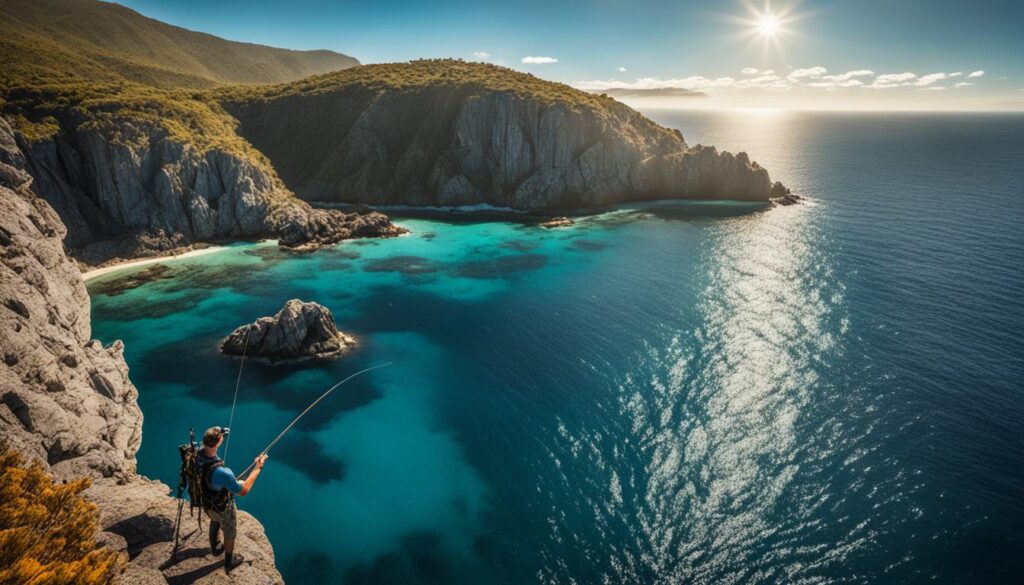
The Art and Ethics of Spearfishing
Spearfishing is more than just catching fish. It’s an art that demands a close bond with nature and a deep knowledge of the underwater world. This sport supports sustainability, responsible harvesting, and the protection of marine life. Embracing these ethics helps protect our oceans for generations to come.
Responsible fishing is a key part of spearfishing ethics. It means following local fishing rules, respecting size and catch limits, and only hunting species that are plentiful and sustainable. These actions help keep marine ecosystems balanced and prevent overfishing.
“Responsible fishing ensures the sustainability of fish populations and helps conserve marine biodiversity.”
Animal conservation is also a big focus in spearfishing ethics. Spearfishers choose their targets carefully to help save vulnerable species. They can judge a fish’s size, health, and if it’s the right time to catch, supporting conservation.
Sustainability is central to a spearfisher’s way of thinking. They realize the ocean’s gifts are limited and need protecting. Sustainable practices help keep fish numbers stable and ensure spearfishing can continue into the future.
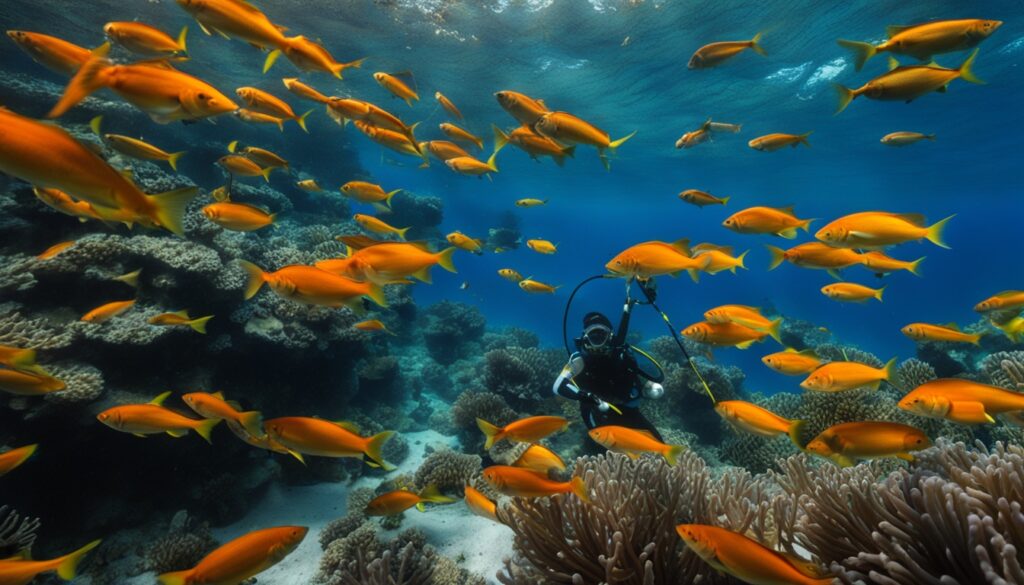
To fully understand spearfishing ethics, looking into scientific studies is important. One study in the Caribbean showed compressor divers caught fish more effectively and had better success than non-compressor divers15. It also found parrotfish to be among the most frequently caught, showing their ecological importance15.
This study also found that small-scale fisheries using various methods and targeting different species can make catches more stable15. Yet, it pointed out that spearfishing needs careful control to avoid harming fish communities over the long term15.
Conclusion
Spearfishing is exciting but requires the right gear, skills, and respect for the ocean. By using key tips from this guide, you can make your spearfishing trips better and catch more fish.
Choosing the correct equipment is vital in spearfishing. Rob Allen’s Euro style spearguns offer great choices. They range from the Tuna 900 speargun, effective up to nine feet161), to the Tuna 1500, which can shoot up to 16 feet162). These spearguns work well for different fish and places.
Despite some challenges like tough laws173) and limited access to spots174), spearfishers have good chances to enjoy their hobby. Shore diving is great for starters181). Plus, online groups182) help fans connect and share tips.
Knowing about dive conditions and marine protected areas is also key. Use tools like Google Earth183) to plan your trips. Always prioritize safety by being aware of dangers like boat traffic184) and following ocean rules185). This ensures a safe and enjoyable spearfishing adventure.
FAQ
What gear do I need for traveling with spear gear?
What type of speargun should I choose as a beginner?
What wetsuit should I use for spearfishing?
What type of fins are recommended for spearfishing?
What other accessories are essential for spearfishing?
What safety considerations should I keep in mind when spearfishing?
What are some popular spearfishing destinations?
What are the ethics of spearfishing?
How can I ensure a successful spearfishing trip?
Source Links
- https://neptonics.com/spearfishing-101/bluewater-spearfishing-gear-breakdown/ – Bluewater Spearfishing Gear Breakdown – Spear Tip To Float
- https://www.noobspearo.com/dry-training-for-spearfishing/ – Dry Training for Spearfishing Guide | Tools, Techniques & Resources
- https://www.oceanhunter.co.nz/resources/spearfishing-basics.html – Spearfishing Basics |Ocean Hunter
- https://www.theperrincollective.com/post/spearfishing-gear-check-list – Spearfishing Gear List 101: A Beginner’s Guide to Essential Equipment
- https://www.theperrincollective.com/post/essential-spearfishing-gear – Essential Spearfishing Gear 101: How to Get Started Spearfishing
- https://neptonics.com/spearfishing-101/the-ultimate-guide-to-selecting-your-perfect-speargun/ – The Ultimate Guide to Selecting Your Perfect Speargun
- https://www.fishing.net.nz/diving-hunting-and-outdoors-in-new-zealand/spearfishing-and-freediving/spearfishing-choosing-the-right-speargun/ – Spearfishing – Choosing the Right Speargun – The Fishing Website
- https://neptonics.com/gear-maintenance/wetsuit-freediving-scuba-wetsuits/ – Choosing the Right Wetsuit for Freediving – Closed vs Open
- https://fishingbooker.com/blog/spearfishing-for-beginners/ – How to Go Spearfishing: The Beginner’s Guide
- https://cyties.com/lifestyle/tips/spearfishing/ – Gear Guide to Start Spearfishing | CYTIES
- https://adreno.com.au/pages/spearfishing-getting-started-guide – Spearfishing – Getting Started Guide
- https://www.scuba.com/blog/spearfishing-tips-for-beginners/ – Spearfishing Tips for Beginners
- https://www.sportsmanboatsmfg.com/blog/67-what-is-spearfishing – What is Spearfishing?
- https://neptonics.com/spearfishing-101/planning-international-spearfishing-trips/ – Planning International Spearfishing Trips
- https://www.ncbi.nlm.nih.gov/pmc/articles/PMC5531497/ – Understanding spearfishing in a coral reef fishery: Fishers’ opportunities, constraints, and decision-making
- https://neptonics.com/spearfishing-101/picking-the-right-rob-allen-speargun-for-you/ – Picking the Right Rob Allen Speargun For You
- https://www.nwdiveclub.com/viewtopic.php?t=17744 – PNW Spear Fishing Education… – Northwest Dive Club
- https://www.noobspearo.com/shore-dive-spearfishing-part-1/ – Guide for Shore dive spearfishing, how to plan and prepare
Spearfishing
Discover Local Spearfishing Spots Near You Now
Explore the thrill of the hunt underwater! Find the best local spearfishing spots and immerse yourself in the adventure near you.
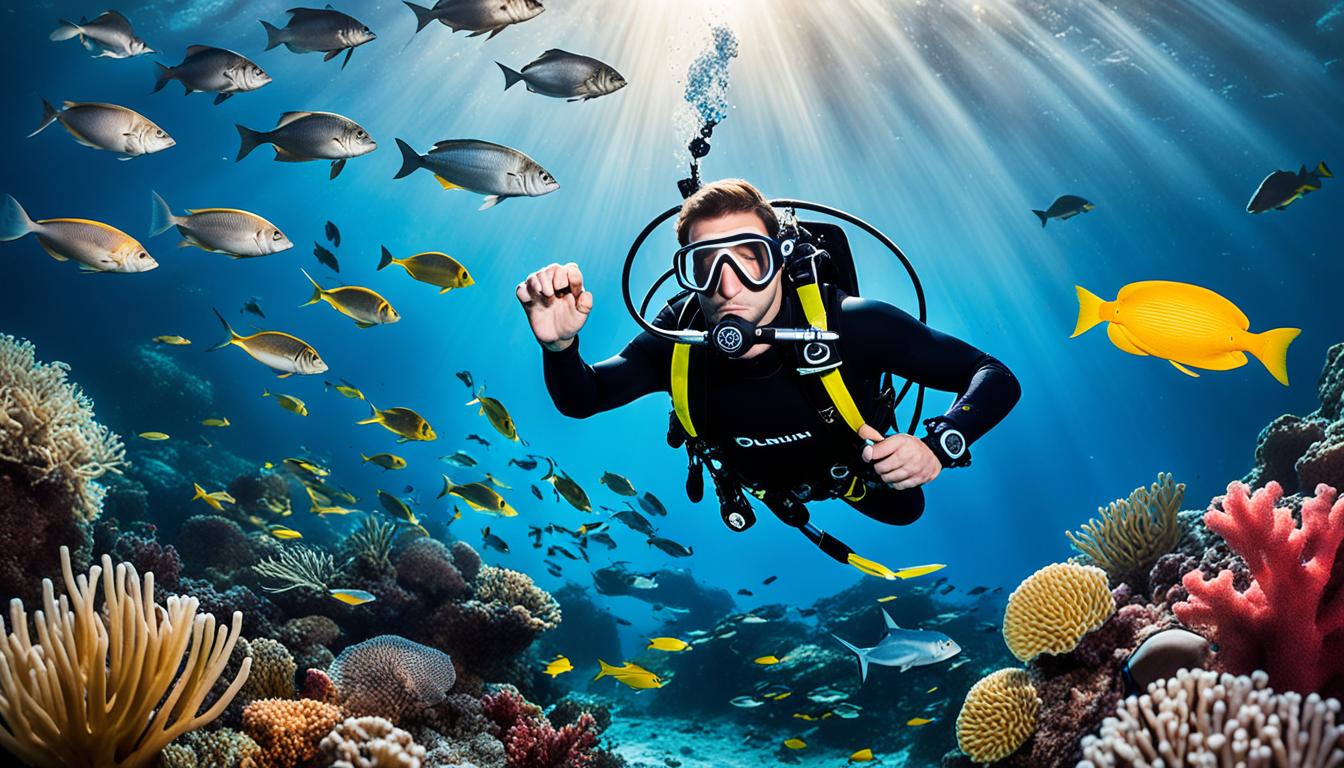
Spearfishing is an addictive and thrilling sport that allows you to hunt underwater. If you’re looking for the best spearfishing spots near you, you’re in luck. We have compiled a list of amazing locations where you can indulge in this exciting adventure. So, get ready to discover local spearfishing spots that offer great opportunities for spearos of all levels.
Imagine this: you’re gliding through crystal-clear waters, your senses heightened as you navigate through an underwater world teeming with life. The sun casts an ethereal glow, illuminating a vibrant display of coral reefs and colorful fish. And there, in the distance, you spot your target: a majestic Tuna, a Barracuda, or perhaps a Mahi Mahi.
Each breath you take, each dive you make, brings you closer to the ultimate thrill of capturing your prey with precision and skill. The adrenaline coursing through your veins heightens your senses, and in that moment, you feel a connection with nature that is truly exhilarating.
Now, imagine having access to the best spearfishing spots right in your backyard. Whether you’re a seasoned spearo or just starting out, there are incredible locations waiting to be discovered near you. With a bit of research, you can uncover some of the **top spearfishing spots near you**, offering an incredible variety of marine life and underwater landscapes. From shallow reefs to deep-water hunting grounds, these spots cater to all skill levels and adventures. So, gear up, dive in, and explore the hidden aquatic treasures right in your vicinity.
From the mesmerizing Azores, attracting spearos from around the world with its record-breaking catches and diverse marine life, to the stunning shores of San Diego, where you can find a wide range of species including Sheepshead, Calico Bass, and even Sharks. Don’t forget the tropical paradise of Thailand, where the spearfishing season from December to April offers plentiful opportunities to reel in the big catch.
And let’s not overlook the enchanting Cozumel, ranked among the top five diving destinations in the world, where you can spear Triggerfish, Snapper, and Mahi Mahi, among other species. Or the vibrant Key West, with its wealth of underwater treasures and attractions that extend beyond the ocean.
So, whether you’re looking for adventure close to home or planning your next spearfishing vacation, we have you covered. Join us as we dive into these amazing locations, explore their unique offerings, and unveil the secrets that make them the best spearfishing spots.
Key Takeaways:
- Discover the best spearfishing spots near you for an exhilarating underwater adventure.
- From the Azores to San Diego, Thailand to Cozumel, explore diverse destinations with abundant marine life.
- Immerse yourself in the beauty of underwater ecosystems and experience the thrill of spearfishing.
- Learn about the tips and techniques for successful spearfishing in each location.
- Connect with other spearos to share experiences, find dive partners, and stay updated on the latest spearfishing news.
The Best Spearfishing Spots: Hawaii
Hawaii is one of the premier destinations for spearfishing enthusiasts, offering a perfect combination of beautiful beaches and diverse marine life. With a comfortable water temperature of around 80°F, spearfishing in Hawaii is a dream come true for underwater hunters seeking ideal conditions.
When it comes to spearfishing opportunities, Hawaii has it all. Whether you are a professional or a novice, there are options to suit every skill level. From bluewater spots teeming with pelagic species to vibrant reefs and nearshore areas, Hawaii offers a wide range of fishing experiences.
The aquatic life in Hawaii is incredibly diverse, providing ample targets for spearfishers. You’ll encounter impressive species such as Bluefin Trevally, Amberjack, Snappers, Wahoo, and Tuna during your spearfishing adventures. These exciting catches make for an exhilarating underwater experience.
Spearfishing in Hawaii is a tailored experience, with the need for certified guides to ensure your safety and compliance with regulations. These expert guides will cater to your individual needs, helping you navigate the waters and discover the best spots for a successful spearfishing expedition.
Not only does spearfishing in Hawaii offer thrilling adventures, but it also contributes to the ecosystem. By controlling invasive species through spearfishing, enthusiasts actively engage in environmentally friendly fishing practices that help maintain the delicate balance of the marine environment.
When it comes to popular catches in Hawaii, spearfishers can expect to reel in Snappers, Groupers, Trevally, Mahi Mahi, Yellowfin Tuna, Goatfish, Surgeonfish, Triggerfish, Wrasse, and Lionfish. However, it’s important to note that specific species like Lobsters and Crabs are strictly prohibited for spearfishing in Hawaii.
Oahu, Maui, and the Big Island are the top locations for spearfishing in Hawaii. Notable hotspots include Kailua-Kona, Honolulu, Anini Beach, and Lahaina. These areas offer a combination of accessible shore diving and boat excursions, ensuring a diverse and exciting spearfishing experience.
While spearfishing is common in Hawaii, there are certain restricted areas to be aware of. The Diamond Head shoreline and the Waiakea Public Fishing Area are among the locations where spearfishing is prohibited. It’s important to respect these regulations to preserve the marine ecosystem and ensure the sustainability of spearfishing activities.
Before embarking on your spearfishing adventure in Hawaii, make sure you have the essential equipment. A mask, snorkel, and speargun are the fundamental tools you’ll need to maximize your chances of success and make the most of your underwater hunting experience.
So pack your gear, dive into the crystal-clear waters of Hawaii, and embark on an unforgettable spearfishing journey amid the stunning landscapes and vibrant marine life that await you.
Spearfishing in the Azores
The Azores, a remote archipelago, has become a renowned destination for spearfishing enthusiasts from around the world. With its diverse range of spearfishing locations, the Azores offers an unforgettable experience for both novice and experienced spearos.
One of the highlights of spearfishing in the Azores is the opportunity to catch monster tuna. In fact, the Azores is one of the rare places where you can sustainably fish for Bluefin Tuna. The Bigeye tuna world record was set at an impressive 110.1kg in the Azores in 2014, elevating the destination’s status in the spearfishing community.
The Azores boasts a variety of spearfishing spots, including Princess Alice Bank, Azores Bank, Condor Bank, Rosais Pinnacle, and Baixa do Sul/Baixa do Norte. These seamounts attract a wide range of fish species, making them ideal locations for thrilling spearfishing expeditions.
Spearfishing trips in the Azores cater to all levels of experience and budgets. From guided shore dives starting at €150 to remote Princess Alice pinnacle experiences costing €1400, there are options to suit every enthusiast. Expedition lengths can range from 4 hours to an entire day, providing ample time to explore the depths of the Azores’ pristine waters. For those seeking an extraordinary adventure, the 3am to midnight trips to Princess Alice Bank offer a unique and rewarding experience.
While spearfishing is the main draw, the Azores offers so much more. The islands provide a range of family-friendly recreational activities such as whale watching, scuba diving, mountain climbing, and exploring the breathtaking landscapes. Accommodation options in the Azores range from camping to 5-star hotels, ensuring that visitors can find the perfect base for their spearfishing adventure.
When spearfishing in the Azores, it’s essential to adhere to the local regulations and guidelines. Spearfishers are required to obtain a license, with options ranging from a Three Years license for €75 to a Per Day license for €5. Additionally, there are minimum legal sizes for various fish species, ensuring the preservation of the ecosystem.
While exploring the Azores’ waters, spearfishers should be aware of the eight Marine Protected Areas (MPAs) surrounding the islands. These MPAs have different categorizations, such as nature reserves, resource management areas, and special areas for diving. They impact spearfishing activities and require spearos to exercise caution and respect when entering these protected zones. It is always recommended to consult with local fishermen for the latest information and to ensure compliance with all restrictions.
For those looking to fully immerse themselves in the Azorean spearfishing experience, discounts on spearfishing equipment are often available for participants going on spearfishing trips. These discounts facilitate accessibility to the necessary gear, enhancing the overall experience.
The Azores is a true paradise for spearfishing enthusiasts. With its abundant marine life, incredible tuna fishing opportunities, and stunning natural beauty, it’s no wonder the Azores has become a must-visit destination for spearos seeking an unforgettable adventure.
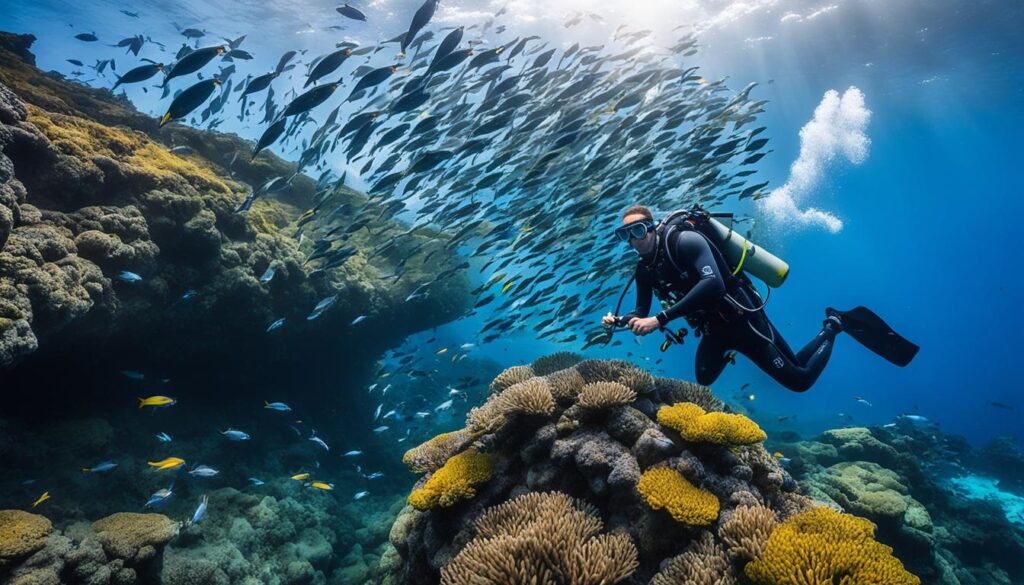
Spearfishing Tips to Maximize Your Catch
- Research the behavior and habitat preferences of target species like Amberjacks and White Trevally to increase your chances of success.
- Dive below 30 meters to explore the depths and discover new spearfishing spots.
- Practice selective fishing and only take one fish per visit to specific spots to preserve the ecosystem.
- Engage in local conversations and consult with experienced fishermen to gain valuable insights and comply with regulations.
- Always prioritize safety and ensure you have the appropriate spearfishing gear and equipment.
Spearfishing in San Diego
San Diego, known as “America’s Finest City,” offers spearfishing enthusiasts a diverse and exciting underwater playground. With its beautiful coastline, abundant marine life, and favorable water temperatures, San Diego is a must-visit destination for spearos of all skill levels.
When it comes to spearfishing in San Diego, there are a variety of fish species to target. Beginners can enjoy the thrill of catching Sheepshead, Calico Bass, and Spiny Lobster in the inshore reefs and the popular Mission Bay Jetty. These locations provide a great opportunity to practice your hunting skills and get familiar with the local underwater environment.
For more experienced spearos, San Diego offers exciting offshore adventures. Pacific Halibut is a prized catch and can be found year-round, thanks to the absence of a closed season for spearfishing in San Diego. Venturing further out, you’ll find Yellowtail Amberjack and White Seabass, which are known for their thrilling fights and delicious taste. The springtime in San Diego, around March or April, marks the beginning of the spawning season for White Seabass, making it an excellent time to target this elusive gamefish.
One of the top spearfishing spots in San Diego is the Outer Banks, located about 20 miles offshore. Here, you’ll have the opportunity to hunt for Mahi, Wahoo, and Tuna. These pelagic species can be found around kelp paddies when the water temperature is over 70 degrees, typically from July to September. Bluefin Tuna, in particular, migrates along the SoCal waters between May and October every year, offering exciting opportunities for spearo enthusiasts. However, it’s important to note that hunting Bluefin Tuna typically requires a larger speargun, preferably 60 inches or larger, due to their size and strength.
The Best Time for Spearfishing in San Diego
In San Diego, the dive season typically starts with hunting White Seabass in early spring and progresses to Yellowtail in early summer. Depending on water temperatures, the season may extend into late October or early November, providing the opportunity to chase Bluefin Tuna. To maximize your chances of success, it’s recommended to plan your dives during sunrise or sunset, especially when combined with an incoming tide. These peak hunting times coincide with the natural feeding patterns of gamefish, increasing your chances of a successful hunt.
Gear and Techniques for Spearfishing in San Diego
When it comes to spearfishing in San Diego, different gamefish require different approaches and gear setups. Yellowtail, White Seabass, Tuna, and Mahi each have their preferred hunting grounds and behaviors. Yellowtail, for example, are commonly found around drop-offs and pinnacles in the water column or around offshore kelp paddies. Mahi, on the other hand, are attracted to kelp paddies when the water temperature exceeds 70 degrees. White Seabass prefer cooler water temperatures ranging from 58 to 65 degrees and pose a unique challenge due to their sensitivity, making them an elusive catch for many spearos. Hunting White Seabass is further influenced by moon phases, with divers aiming to be in the water approximately 30 minutes before slack tides.
It’s essential to equip yourself with the appropriate gear for spearfishing in San Diego. A reliable speargun, a well-fitting wetsuit, and a sturdy weight belt are the essential tools of any spearo. Additionally, a California fishing license is required for all anglers aged 16 and up in San Diego. If you plan to embark on trips lasting more than two days, you may also need an Ocean Enhancement Validation. For those interested in spearfishing around the Coronado Islands, a Mexican fishing license and FMM visa are necessary.
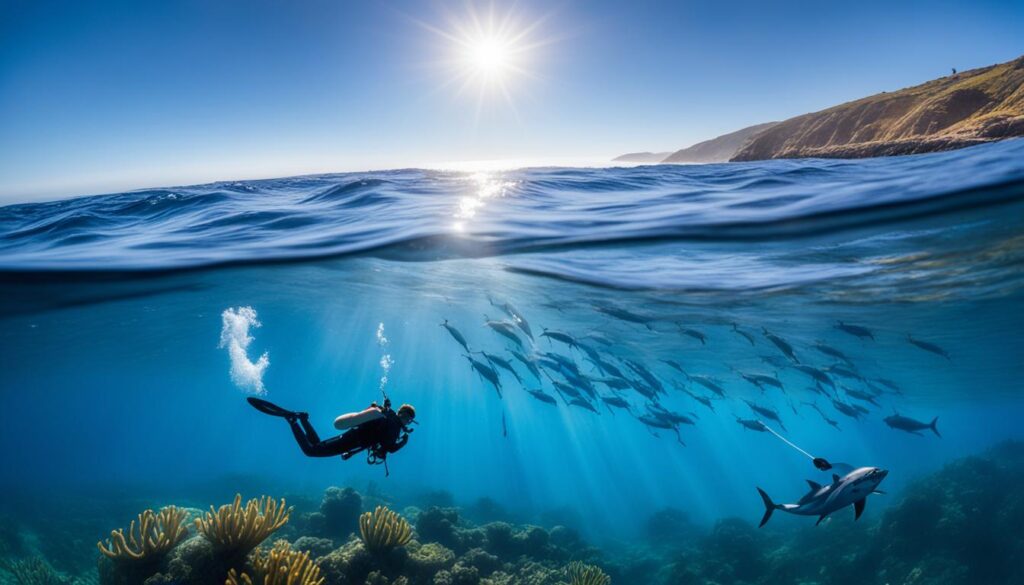
Spearfishing in Krabi, Thailand
If you’re looking for an unforgettable spearfishing adventure, Krabi, Thailand should be at the top of your list. This tropical paradise offers a unique combination of stunning scenery, abundant marine life, and thrilling spearfishing opportunities.
Known for its crystal-clear waters and diverse underwater ecosystem, Krabi is a haven for spearfishers of all skill levels. Whether you’re a beginner or an experienced spearo, there are plenty of options to suit your preferences and abilities.
One of the main advantages of spearfishing in Krabi is the variety of fish species you can encounter. From trevally, mackerel, and coral trout to snappers and barracuda, the waters around Krabi are teeming with marine life. With proper knowledge and respect for the local regulations, you can have the opportunity to catch some impressive fish.
It’s important to note that while spearfishing is legal in most areas of Thailand, there are some restrictions to ensure the preservation of the underwater ecosystem. National Parks, National Marine Reserves, and areas controlled by the military are off-limits for spearfishing. Additionally, certain fish species like parrotfish, triggerfish, and sharks are protected and should not be targeted.
If you’re planning a spearfishing trip to Krabi, it’s recommended to visit between December and April, as these months offer the best weather conditions and visibility. During this time, you can expect excellent water clarity, allowing you to spot your target fish with ease.
When it comes to gear, while spearfishing equipment can be found in Thailand, it’s worth noting that it can be quite expensive due to high import taxes. It’s advisable to bring your own gear if possible or to make necessary arrangements before your trip.
During your spearfishing journey in Krabi, you can also indulge in other exciting activities such as exploring deserted beaches or enjoying a beach cookout with your catch. Immerse yourself in the beauty of the Thai islands and create unforgettable memories both underwater and on land.
In conclusion, Krabi, Thailand offers an incredible spearfishing experience for enthusiasts around the world. With its stunning scenery, abundant marine life, and diverse fish species, Krabi is a must-visit destination for all spearfishers. So pack your gear, prepare for an adventure, and get ready to dive into the waters of Krabi.
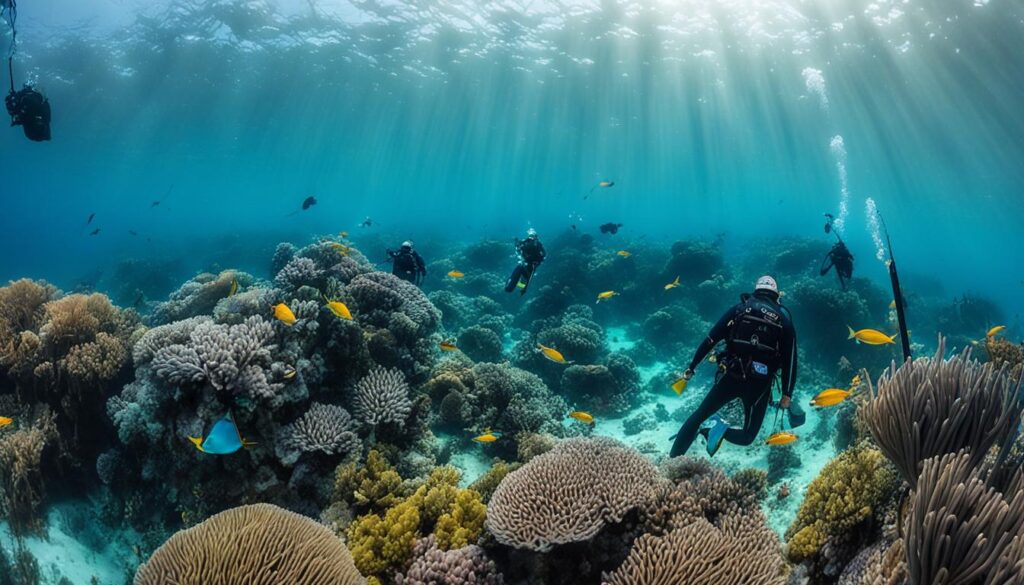
Disclaimer: The author had their speargun since 2013 and has only used it a handful of times, mostly offshore. The above information is based on personal experience and research, and some details may vary. Always adhere to local regulations and guidelines when spearfishing in Krabi, Thailand or any other location.
Spearfishing in Cozumel, Mexico
Cozumel, Mexico offers a remarkable spearfishing experience that combines the thrill of hunting underwater with the stunning beauty of the Caribbean Sea. With spearfishing spots just a twenty-minute boat ride from shore, Cozumel is a haven for both beginners and experienced spearfishers.
The visibility in Cozumel is excellent, allowing divers to have a clear view of their surroundings and the diverse marine life that inhabits these waters. The depth for spearfishing in Cozumel ranges from 6 to 30 meters (20 – 100 ft), providing opportunities for divers of varying skill levels to explore different depths and encounter a wide range of fish species.
Speaking of fish, Cozumel is home to an abundance of fish commonly targeted in spearfishing. Triggerfish, barracuda, snapper, amberjack, grouper, wahoo, mahi-mahi, rainbow runner, lionfish, and African pompano are just a few examples of the species you can expect to encounter during your spearfishing adventure in Cozumel.
To further enhance your experience, Cozumel offers not only exceptional spearfishing but also a variety of other attractions. You can take time to explore Punta Sur Beach Eco Park, visit the Mayan ruins of Tulum on the mainland, or simply revel in the beauty of the turquoise Caribbean Sea.
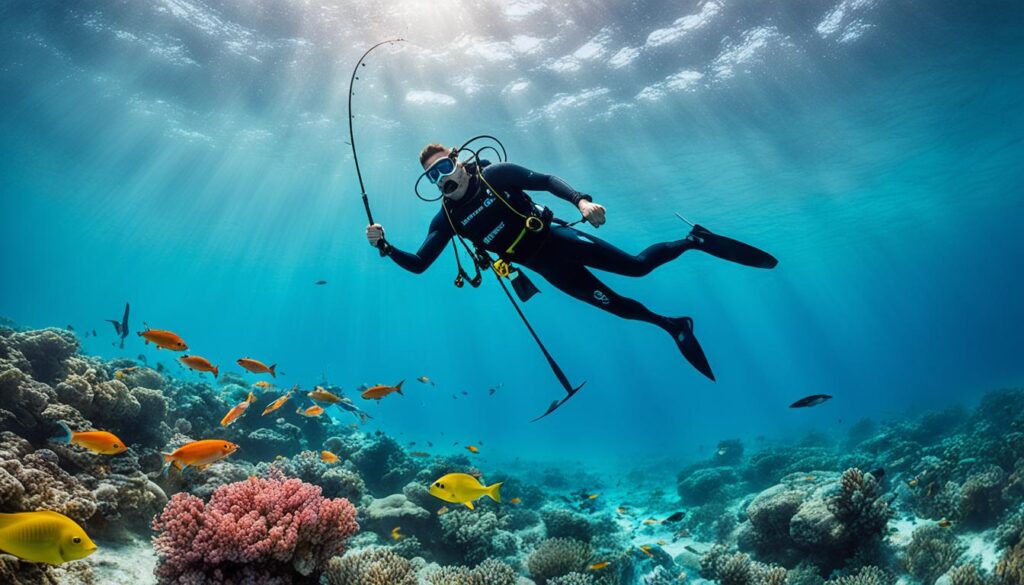
| Location | Depth Range | Fish Species |
|---|---|---|
| Cozumel | 6 to 30 meters (20 – 100 ft) |
Triggerfish, barracuda, snapper, amberjack, grouper, wahoo, mahi-mahi, rainbow runner, lionfish, African pompano |
| Cancun | 4 to 30 meters (15 – 100 ft) |
Amblerjack, wahoo, barracuda, grouper, snapper, lionfish, yellow jack, hogfish, permit, mahi-mahi, mackerel |
| Holbox | 18 to 30 meters (60 – 100 ft) |
Snapper, grouper, amberjack, cobia, permit |
| Playa del Carmen | 6 to 28 meters (20 – 90 ft) |
Permit, wahoo, barracuda, snapper, grouper, mackerel, lionfish, African pompano |
| Isla Mujeres | 4 to 30 meters (15 – 100 ft) |
Amblerjack, barracuda, grouper, snapper, lionfish, yellow jack, hogfish, permit, mahi-mahi, mackerel |
| Tulum | 6 to 25 meters (20 – 80 ft) |
Mackerel, barracuda, snapper, grouper, lionfish, hogfish |
At Arpón Spearfishing, led by experienced guides Diego and Capitán Manuel, you can embark on unforgettable spearfishing excursions in Cozumel. Whether you’re a beginner or an advanced spearfisher, the team at Arpón ensures your safety and provides professional guidance throughout the experience.
Signing spearfishing waivers and following safety guidelines are essential before diving into the waters of Cozumel. You’ll practice apnea-breathing and descending techniques over a Cozumel shipwreck, allowing you to develop your skills and adapt to the challenges of spearfishing.
Spearfishing requires physical fitness and comfort in the water as it involves extensive swimming. While success rates in catching fish can vary, participants often encounter various fish species during their spearfishing trips in Cozumel. The activity is described as challenging yet immensely rewarding, so it’s recommended to try the experience at least twice to appreciate the learning curve.
Participants who have joined spearfishing trips in Cozumel have expressed their satisfaction with the professionalism, safety measures, and guidance provided by the team at Arpón Spearfishing. Beginners have reported successful catches within 30 minutes of their first spearfishing experience, which speaks to the beginner-friendly environment created by the highly skilled team.
No spearfishing adventure is complete without indulging in the delicious taste of freshly caught fish. At Arpón Spearfishing, the fish you catch will be expertly prepared and served, enhancing the overall experience and providing a delightful finale to your spearfishing excursion.
Discover the thrill of spearfishing in Cozumel, Mexico, and create unforgettable memories in the underwater paradise of the Mexican Caribbean. With its exceptional marine life, excellent visibility, and expert guidance, Cozumel offers a spearfishing experience like no other. Book your spearfishing trip now and embark on an adventure you’ll want to repeat again and again.
Spearfishing in Key West, Florida
Key West, Florida offers spearfishing enthusiasts an exhilarating and unforgettable experience in the crystal-clear waters of the area. With its abundance of marine life and diverse underwater landscapes, Key West is a paradise for both novice and experienced spearos.
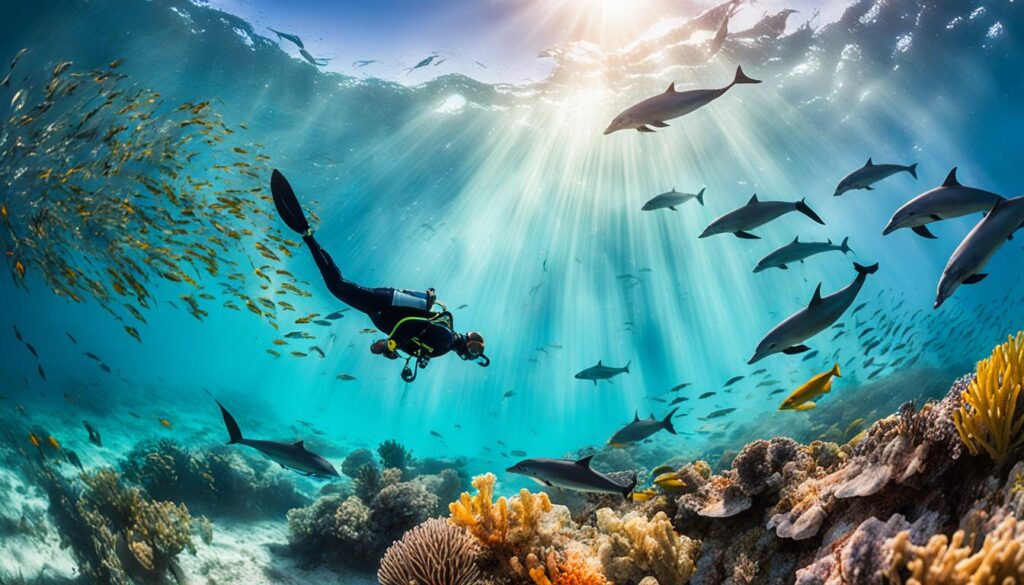
When it comes to spearfishing charters in Key West, Forever Young is a reputable and trusted name. Established in 2016, Forever Young has been providing top-notch spearfishing adventures with a focus on safety, professionalism, and customized experiences based on participants’ skill levels.
Forever Young offers a variety of spearfishing expeditions, including bluewater spearfishing, reef spearfishing, freedive spearfishing, scuba spearfishing, wreck spearfishing, lobster hunting, and lionfish hunting. Whether you prefer hunting dynamic game fish like Wahoo, Mahi Mahi, and Tuna or exploring the vibrant coral reefs, there is an expedition tailored to your interests.
Each spearfishing charter with Forever Young includes a private boat for up to four divers, an experienced in-water spear guide, refreshments, tanks, weights, and all the necessary dive and spearfishing equipment. The comfortable and well-equipped boats ensure a smooth and enjoyable experience throughout your adventure.
“The waters around Key West are teeming with marine life and offer fantastic spearfishing opportunities. It’s a dream destination for any spearo!” – Cora Beth
Whether you’re a beginner or an experienced spearfisherman, the captains at Forever Young, including Hunter, Allen, Justin, and Jamie, will ensure an unforgettable adventure. From exploring the shallow flats to venturing into the deeper offshore waters, they have the knowledge and expertise to maximize your chances of success.
Forever Young offers various charter options to accommodate different group sizes and budgets. For example, the Lionfish Spearfishing Fury charter, guided by Hunter, caters to 1 to 4 people with pricing starting from $850. The Inshore Fishing Charter near Key West, guided by Allen, combines lobstering and reef snorkeling, accommodating 1 to 6 people with prices starting from $1,100.
Recommended Charter: Key West Wreck Fishing
If you’re looking for an adrenaline-pumping adventure, the Key West Wreck Fishing trip guided by Billy is the perfect choice. This charter is designed for 1 to 4 people and starts at $750.
During the Key West Wreck Fishing trip, you’ll explore the area’s sunken shipwrecks and reefs, targeting a variety of species that call these structures home. From Snapper to Grouper, you’ll have the opportunity to reel in some impressive catches while enjoying the beautiful underwater scenery.
| Charter | Guide | Capacity | Pricing |
|---|---|---|---|
| Lionfish Spearfishing Fury | Hunter | 1-4 people | $850+ |
| Inshore Fishing Charter near Key West (Lobstering and Reef Snorkeling Combo) | Allen | 1-6 people | $1,100+ |
| Dry Tortugas Trip | Justin | 1-6 people | $3,750+ |
| Flats, Inshore Fishing Charter in Key West for Key West On Light Tackle & Flies | Jamie | 1-2 people | $600+ |
| Tarpon Fishing trips (seasonally) | Antonio | 1-6 people | $250+ |
To book your spearfishing adventure in Key West, contact Forever Young directly at 1-305-680-8879. Their friendly and knowledgeable team will assist you in selecting the perfect charter and answering any questions you may have. Get ready for an unforgettable spearfishing experience in Key West, Florida!
Exploring the Spearfishing Spots in Big Island, Hawaii
The Big Island of Hawaii is an ideal destination for spearfishing enthusiasts, offering a diverse range of spearfishing spots and abundant marine life. With its crystal-clear waters and stunning underwater landscapes, this island provides the perfect backdrop for an unforgettable spearfishing experience. If you’re looking to spearfish on the Big Island, Kona Freedivers is your go-to guide. With their expertise and dedication to ethical and sustainable practices, they will ensure that you have a safe and rewarding adventure.
When you choose Kona Freedivers for your spearfishing excursion, you can expect small groups with a maximum capacity of 6 people for group dives. These group dives typically last for around 2.5 hours, giving you ample time to explore the underwater world and hone your spearfishing skills. If you prefer a more personalized experience, private dives are also available for 1 on 1 experiences or with groups of 2-4 guests. The flexible start times for private dives ranging from 6:30-7:30 am allow you to customize your itinerary according to your preferences.
One of the highlights of spearfishing with Kona Freedivers is the option to include a freedive experience as an add-on to both group and private dives. Freediving allows you to encounter fish and wildlife on a single breath, providing a unique and exhilarating perspective of the underwater world. The professional guides at Kona Freedivers have over a decade of experience and have trained over 10,000 adventurers since 2009, ensuring that you are in capable hands throughout your spearfishing journey.
With a strong emphasis on ethical and sustainable spearfishing practices, Kona Freedivers actively contributes to the preservation of marine ecosystems. During spearfishing lessons, various training aspects are covered, including speargun safety, breathing techniques, hunting techniques, and ethics. This comprehensive approach ensures that you not only become a skilled spearfisher but also a responsible steward of the oceans.
As you explore the spearfishing spots on the Big Island, you’ll have exclusive access to explorer dive sites during private dives. These hidden gems offer unparalleled opportunities to discover lesser-known areas and encounter a diverse array of marine life. Some of the popular spearfishing spots on the Big Island include:
| Spearfishing Spot | Description |
|---|---|
| Keaukaha | A four-mile stretch with many spots for diving, making it a popular choice for spearfishing enthusiasts. |
| Hakalau Beach | Frequented by the author once a week, demonstrating a high level of personal interest and preference for this spearfishing spot. |
| Pine Trees Beach | Although unpaved, it is accessible and provides a warm, clear water environment ideal for day or night dives. |
| Lymons Beach | Near Kailua-Kona, known for its good variety of fish and clear water, making it a popular spot for spearfishing and surfing. |
| Kopoho | Located on the Puna side of the island and offers cold deep water with a wide variety of fish species, including the presence of Manpachi in holes and caves. |
Whether you’re a seasoned spearfisher or a beginner looking to learn, spearfishing on the Big Island of Hawaii is an incredible experience. With the guidance of Kona Freedivers and the wealth of spearfishing spots available, you’re sure to create unforgettable memories and connect with the underwater world in a truly unique way.

Spearfishing Tips and Techniques
Are you ready to take your spearfishing skills to the next level? Whether you’re a beginner looking to learn the ropes or an experienced angler seeking new techniques, these spearfishing tips and techniques will help improve your success and safety on your next spearfishing adventure.
Choose the Right Equipment
One of the most important spearfishing tips is to choose the right equipment. A well-functioning speargun or polespear, a high-quality mask and snorkel, a weight belt, and fins that fit properly are essential for a successful spearfishing trip. Investing in reliable equipment will not only enhance your efficiency underwater but also ensure your safety.
Master Your Breath-Hold Techniques
Being able to hold your breath for extended periods is crucial for spearfishing. Practice breath-hold techniques like diaphragmatic breathing and static apnea to improve your lung capacity and increase your diving time. This will give you more opportunities to spot and target fish without having to resurface frequently.
Learn Fish Species and Behavior
To increase your chances of a successful hunt, familiarize yourself with different fish species and their behavior. Learn to identify the fish you intend to target, understand their habitat preferences, and study their feeding patterns. This knowledge will help you locate fish and approach them more effectively.
Practice Stealth and Caution
When spearfishing, it’s essential to be stealthy and cautious. Move slowly and avoid making sudden movements that could startle the fish. Practice your diving technique to minimize noise and disturbance underwater. A stealthy approach will allow you to get closer to the fish, increasing your chances of a successful shot.
Prioritize Safety
Spearfishing safety should always be a top priority. Dive with a buddy whenever possible to have an extra set of eyes and ensure you have someone to assist you in case of an emergency. Use a dive flag to increase your visibility and notify other watercraft of your presence. Familiarize yourself with local rules and regulations regarding spearfishing to protect the marine ecosystem and avoid any legal issues.
Remember, safety ensures an enjoyable and successful spearfishing experience.
| Destination | Charter Type | Capacity | Price Range | Recent Bookings |
|---|---|---|---|---|
| Little Torch Key | Inshore Fishing | 1-6 people | $500+ | 4 bookings |
| Miami Beach | Deep Sea, Jetty, and Nearshore Fishing | 1-4 people | $750+ | 3 bookings |
| Key West | Nearshore Fishing | 1-4 people | $850+ | 13 bookings |
| Corpus Christi | Oil Rig Offshore Charter | 1-6 people | $1,400+ | N/A |
| Miami Beach | Spearfishing Excursions | 1-4 people | $945+ | N/A |
| Key Largo | Deep Sea, Inshore, and Nearshore Fishing | 1-3 people | $700+ | N/A |
| Spanish Wells | Nearshore Fishing | 1-4 people | $650+ | N/A |
| Spanish Wells | Baja Spearfishing | 1-6 people | $700+ | N/A |
| Islamorada | Reef and Wreck Spearfishing | 1-6 people | $1,100+ | N/A |
| Miami | Lobster Diving | 1-20 people | $1,800+ | N/A |
| Galveston | Private Fishing Charters | Varied | Varied | N/A |
Conclusion
Embarking on a spearfishing adventure opens up a world of thrilling underwater experiences. From the crystal-clear waters of Hawaii to the vibrant reefs of Mexico, there are numerous spearfishing spots waiting to be explored. But before you dive in, make sure you’re equipped with the right spearfishing gear and knowledge to ensure a safe and successful trip.
Consider joining spearfishing classes to enhance your skills and learn valuable techniques from experienced instructors. These classes can provide insights into the best practices, safety guidelines, and local regulations, helping you make the most of your spearfishing excursions. Alternatively, you can opt for spearfishing charters, where knowledgeable guides will take you to the best spots and share their expertise.
Stay connected with the spearfishing community by joining Facebook groups dedicated to spearfishing. These groups are not only a great platform to buy or sell gear, but they also offer a space to discuss conditions, seek advice, and even find dive buddies for your next adventure.
So, whether you’re a seasoned spearfisherman or just starting out, remember to plan your dives carefully using tools like Google Earth and stay up-to-date with marine forecasts from reliable sources like the Bureau of Meteorology. With the right preparation and a sense of adventure, your spearfishing journeys will be filled with unforgettable memories and the thrill of the hunt.
FAQ
What is spearfishing?
Where can I find the best spearfishing spots near me?
What fish species can be targeted during spearfishing?
What equipment do I need for spearfishing?
Are there any safety precautions I should take while spearfishing?
Are there any classes or charters available for spearfishing?
How can I improve my spearfishing skills?
Are there any prohibited spearfishing areas I should be aware of?
Spearfishing
Ultimate Guide to Perth Spearfishing Adventures
Dive into the thrilling world of Perth spearfishing with our comprehensive guide to the best spots, gear, and tips for an unforgettable underwater hunt.
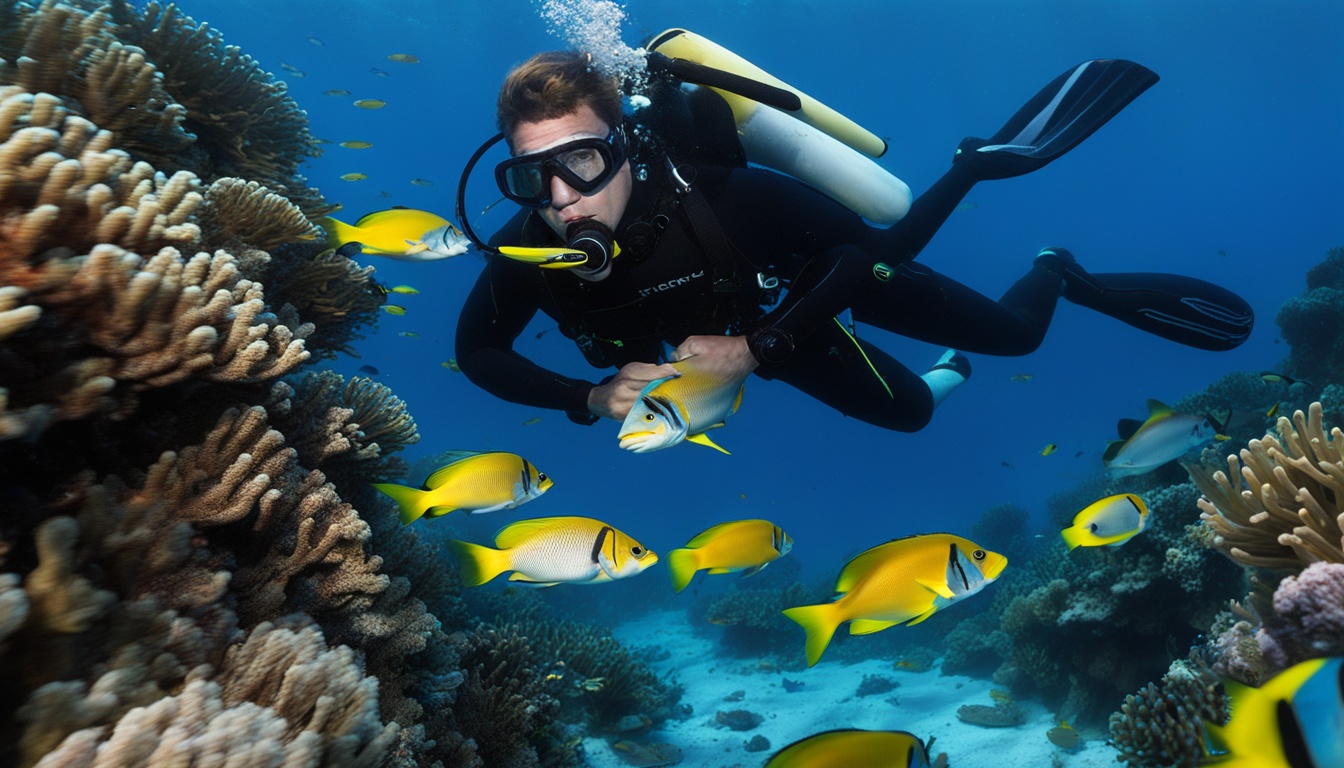
Perth, located on the breathtaking coastline of Western Australia, offers thrilling opportunities for spearfishing enthusiasts. With its diverse marine ecosystems and year-round spearfishing calendar, Perth is a dream destination for underwater hunters. From targeting pelagic species in the summer to exploring the bottom dwellers in the autumn, each season brings unique spearfishing experiences.
Imagine this: It’s a warm summer day in Perth, and you and your buddy are geared up, ready to explore the vibrant underwater world. As you dive into the crystal-clear waters of Hamelin, the sensation of weightlessness washes over you. With your Rob Allen spearguns in hand, you navigate through the colorful reefs, scanning the depths for schools of mackerel and dolphin fish.
Just as you start to lose hope, a glimmer catches your eye. Swimming gracefully in the distance is a massive coral trout—a prized catch in these waters. With steady aim, you line up your shot and release the spear, watching as it pierces through the water and finds its mark. The rush of adrenaline fills you as you secure your first trophy of the day.
But spearfishing in Perth isn’t just about the bountiful catches or the exhilaration of the hunt. It’s about immersing yourself in the natural wonders of the underwater world, witnessing the diverse marine life that calls these reefs home. From the majestic Pink Snapper to the elusive King George Whiting, every dive unveils a new chapter of Western Australia’s underwater splendor.
As the sun sets on another incredible day in Perth, you and your buddy surface, hearts pounding with the thrill of your adventures. You can’t wait to share your stories at the next spearfishing club meeting, where fellow enthusiasts gather to exchange tales of triumph and seek advice on the best locations and equipment.
Key Takeaways:
- Perth offers thrilling spearfishing adventures throughout the year.
- The diverse marine ecosystems of Perth provide opportunities to target various species.
- Rob Allen spearguns are a popular choice among spearfishing enthusiasts in Perth.
- Hamelin, Busselton, and Metro area reefs are frequently mentioned spearfishing locations in Perth.
- Joining a spearfishing club can enhance your spearfishing experience and help you connect with like-minded individuals.
Summer: The Tropical Thrill
During summer, the northern currents warm the waters off Perth, creating the perfect conditions for thrilling spearfishing adventures. This is the season when pelagic species make their presence known, offering an exciting challenge for spearos. The pristine waters teem with an array of incredible species, including the fast and aggressive Spanish Mackerel and the majestic Sailfish.
Spanish Mackerel, known for their speed and agility, can be found in abundance around the picturesque Ningaloo Reef and the stunning Kimberley region. These powerful fish can reach up to 50 kilograms in weight and swim speeds of 5.5 meters per second. As spearos, keep an eye out for bird activity or surface disturbances, which often indicate the presence of pelagic species like the Spanish Mackerel.
Sailfish, on the other hand, venture closer to shore during summer, particularly around Broome and Exmouth. These magnificent creatures provide an exhilarating challenge for spearos with their incredible speed and acrobatic displays. Spearfishing for Sailfish is an experience that combines thrill, adrenaline, and the joy of being immersed in the tropical waters of Western Australia.
The best time for pelagic spearfishing in summer is early morning when the waters are clearer, and the fish are more active. The warm sunlight reflecting off the water creates the perfect hunting environment. As you embark on your summer spearfishing expeditions in Perth, remember to equip yourself with the right hunting gear suitable for targeting pelagic species.
Recommended Hunting Gear for Summer Spearfishing:
| Species | Hunting Gear |
|---|---|
| Bluefin Tuna | Timber Speargun with a hybrid carbon and mahogany barrel |
| Wahoo | Minimum 1.2 length Double Rubber Speargun or 1.0 Metre Roller with a breakaway setup |
| Yellowtail Kingfish | Variety of speargun lengths and styles, with speargun and reel combos preferred by experienced spearos |
| Spanish Mackerel | Longer-range spear guns of 1.2m or longer, equipped with twin 14mm up to 16mm rubbers or a roller gun of 1.1m or longer |
Equipped with the right gear and with the knowledge of where and when to find these pelagic species, you’re ready to dive into the exhilarating world of summer spearfishing in Perth. Explore the stunning reefs, embrace the warm waters, and embark on unforgettable underwater expeditions.
Up next, we’ll navigate the depths of Perth’s waters during autumn to uncover the demersal delights that await spearos.
Autumn: Demersal Delights
As the water begins to cool in autumn, it’s time to dive into the world of demersal spearfishing off the coast of Perth. This season offers an abundance of opportunities to target demersal species, including the prized Dhufish.
Dhufish, known for their distinctive appearance and delicious taste, can be commonly found off the coast of Perth and the South West during autumn. These elusive fish are known to inhabit offshore reefs and limestone ledges, making them an exciting challenge for spearos.
When targeting demersal species like Dhufish, patience and stealth are key. These fish are naturally curious but cautious, so it’s important to approach them gently and quietly. Take your time to explore the underwater landscape, looking under ledges and in crevices where these fish love to hide.
Another demersal species worth pursuing in autumn is the Baldchin Groper. This stunning fish is often found around the Abrolhos Islands, providing spearos with yet another exciting opportunity for a successful catch.
To enhance your autumn spearfishing experience, consider joining field days to Reef Beach in March and Bluff Creek in April. These events provide a great opportunity to connect with fellow enthusiasts and explore new fishing spots.
Tips for Spearfishing Demersal Species in Autumn:
- Be patient and stealthy to approach curious yet cautious fish.
- Explore ledges and crevices where demersal species love to hide.
- Join field days to discover new fishing spots and connect with fellow spearos.
- Stay up to date with the latest fishing competition entries for a chance to showcase your skills.
Autumn spearfishing in Perth offers a unique opportunity to target demersal species and indulge in the delight of successful catches. So gear up, dive in, and experience the thrill of spearfishing in the autumn waters of Perth!
Winter: The Southern Sojourn
Winter in Perth may bring cooler waters, but it also offers the perfect opportunity for an exciting spearfishing adventure targeting unique species found along the southern coast. While some may avoid the cold temperatures, experienced spearfishers know that this is the time to embrace the challenge and discover the hidden treasures beneath the surface.
One of the prime targets during winter spearfishing expeditions is the Southern Rock Lobster. These elusive creatures can be found hiding within the rocky crevices and kelp beds that line the southern coastline of Western Australia. Their delicate flavor and tender meat make them a prized catch, but their stealth and adaptability require a keen eye and a calm approach for a successful hunt.
As you explore the cooler waters, keep an eye out for Australian salmon. These powerful and fast-swimming fish are known for their acrobatic displays and thrilling fights. While they can be found in various locations, the surf along Albany and Esperance is particularly popular for encountering schools of salmon. Flocks of seabirds hovering above the water often signify the presence of these prized fish just beneath the surface, offering valuable clues for spearfishers.
Winter spearfishing in Perth is an opportunity to encounter a unique range of southern species. From the elusive Southern Rock Lobster to the high-energy Australian salmon, the southern sojourn promises both thrilling encounters and delectable rewards for those brave enough to venture into the cooler waters.
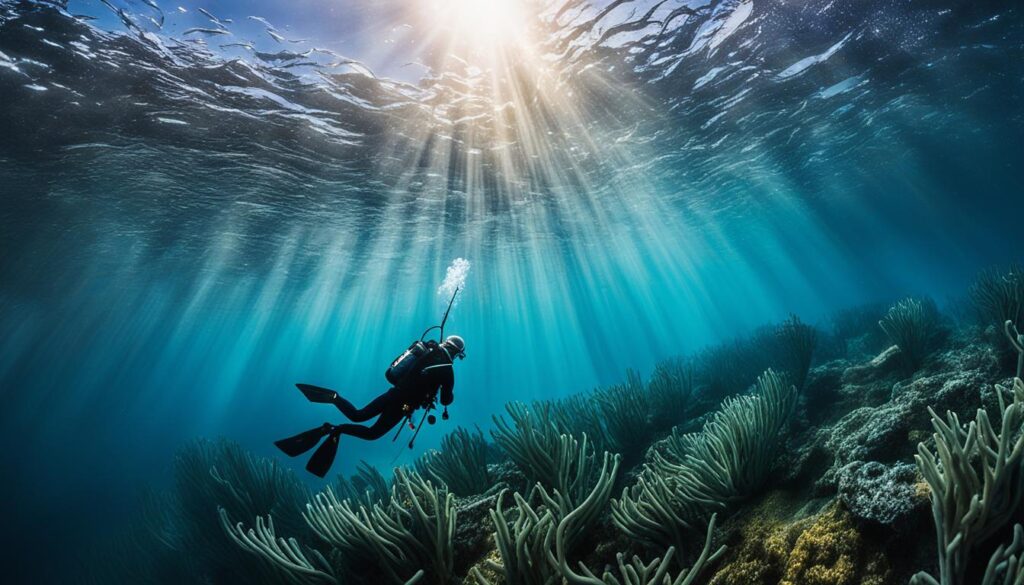
Winter is the time for embracing the challenge and discovering the hidden treasures beneath the surface.
Spring: The Season of Diversity
As the seasons change in Perth, so does the underwater landscape. Spring brings a vibrant burst of life to the coastal waters, making it an exciting time for spearfishing enthusiasts. With diverse species and unique opportunities, spring spearfishing in Perth is an adventure like no other.
One of the highlights of spring spearfishing in Perth is the abundance of diverse species that can be found in the waters. Squid, in particular, come closer to the shore during this season, making areas like Shark Bay and the jetties of Fremantle prime spots for targeting them. Their presence attracts other predatory fish, creating an ecosystem teeming with life.
Giant trevally and their relatives also start to make their presence known again during spring. These powerful and elusive fish can be found in northern waters around coral atolls and offshore islands. Targeting them requires skill and strategy, but the reward is a thrilling catch and an unforgettable experience.
When spearfishing for squid or trevally, it’s important to take advantage of the unique behaviors exhibited by these species during spring. Squid are attracted to light, making dusk and dawn the ideal times to target them. Using LED lights or flashers can significantly increase your chances of success.
“Spring spearfishing in Perth offers a unique opportunity to encounter a wide range of species and experience the beauty of the underwater world. With the right techniques and a sense of adventure, you can make the most of this diverse season.”
During your spring spearfishing adventures in Perth, consider utilizing burley or chumming techniques to attract the attention of trevally. These fish are highly curious and are often drawn in by the scent of burley. By creating a scent trail, you can entice them to venture closer, increasing your chances of a successful hunt.
Spring also brings favorable conditions for spearfishing in Perth. The water temperature ranges from 17 degrees to 26 degrees Celsius during this season, providing a comfortable environment for divers. Additionally, visibility tends to improve as compared to the summer months, with an increase of 10 to 15 meters in some areas.
Spring Spearfishing Guidelines:
- Take advantage of dusk and dawn when targeting squid.
- Utilize LED lights or flashers to attract squid.
- Use burley or chumming to attract the attention of trevally.
- Take advantage of improved visibility in spring for a better spearfishing experience.
Spring Spearfishing Species
| Species | Size | Preferred Locations |
|---|---|---|
| Squid | – | Shark Bay, Fremantle jetties |
| Giant Trevally | – | Coral atolls, offshore islands |
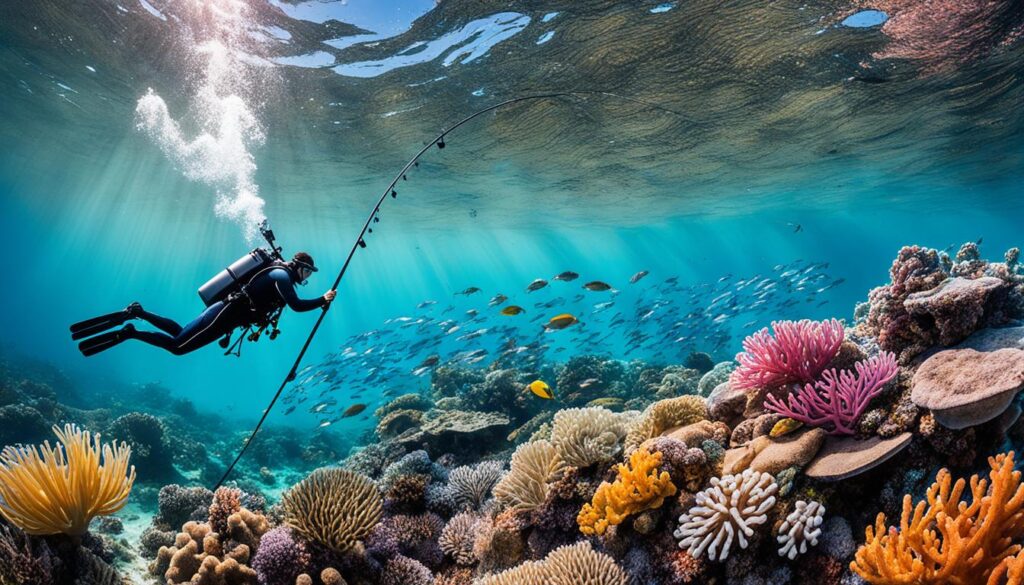
Rottnest Island – The Jewel in Perth’s Diving Crown
Located just a short boat ride from Fremantle, Rottnest Island is a hidden gem for Perth spearfishing enthusiasts. Renowned for its breathtaking dive sites, this tropical island offers a paradise of underwater exploration.
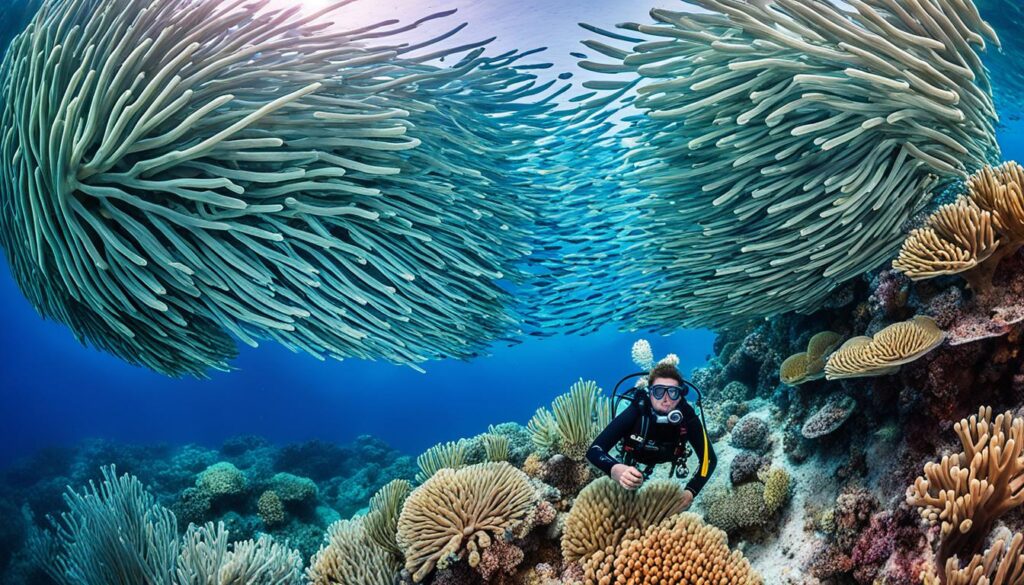
One of the highlights of Rottnest Island is the opportunity to dive on the HMAS Swan, a decommissioned naval destroyer deliberately sunk off the coast of Dunsborough. This majestic wreck has become an artificial reef, attracting a rich diversity of marine life. As you descend into the depths, you’ll be mesmerized by the sight of colorful coral formations and the abundance of fish swimming through the corridors of the ship.
Rottnest Island is also home to a variety of other exceptional dive sites. Crystal Palace, renowned for its crystal-clear waters, offers a stunning coral garden filled with numerous species of fish. If you’re feeling adventurous, Shark Cave provides a thrilling encounter with reef sharks and other marine predators. And for those who appreciate the beauty of vibrant corals, Kingston Reef is a must-visit spot.
As you explore the underwater world of Rottnest Island, you’ll be captivated by the diverse marine life that calls this area home. Encounter the fascinating weedy sea dragons, spot the elusive blue-ringed octopus, or marvel at the majestic Wobbegong sharks. Keep your eyes peeled for playful dolphins, graceful turtles, and the enchanting leafy sea dragons. It’s a truly immersive experience that will leave you in awe of Perth’s extraordinary marine ecosystem.
| Dive Site | Location | Depth Range |
|---|---|---|
| Crystal Palace | Rottnest Island | 5-15 meters |
| Shark Cave | Rottnest Island | 10-25 meters |
| Kingston Reef | Rottnest Island | 5-20 meters |
Diving in Rottnest Island offers not only an incredible underwater adventure but also the chance to witness the island’s natural beauty above the surface. Take a break between dives to relax on the stunning sandy beaches or explore the island’s unique flora and fauna. With its turquoise bays, limestone reefs, and crystal-clear waters, Rottnest Island truly deserves its place as the jewel in Perth’s diving crown.
Ammunition Jetty – A Unique Underwater Destination
Ammunition Jetty, located in Cockburn Sound near Rockingham, is a unique underwater destination that offers an unforgettable diving experience. Just a 40-minute drive from Perth CBD, this dive site is easily accessible and frequently visited by diving enthusiasts from all over.
Once a former ammunition jetty, this site has transformed into a thriving marine ecosystem teeming with diverse marine life. Nudibranchs, seahorses, octopuses, cuttlefish, and various fish species call this jetty home, creating a vibrant and captivating underwater environment.
As you dive beneath the surface, you’ll be greeted by an abundance of marine biodiversity. The jetty pillars themselves are adorned with soft corals, sponges, and a variety of other invertebrates, creating a colorful tapestry of life. Exploring the nooks and crannies around the pillars is like delving into an underwater maze, where every turn reveals a new and fascinating sight.
Ammunition Jetty is not only a daytime diving destination; it also offers incredible opportunities for night diving and underwater photography. The shallow depth and easy access from the shore make it an ideal spot for capturing stunning images of the marine life that thrives here. Whether you’re an experienced diver or a novice underwater photographer, this unique dive site will astound you with its beauty.
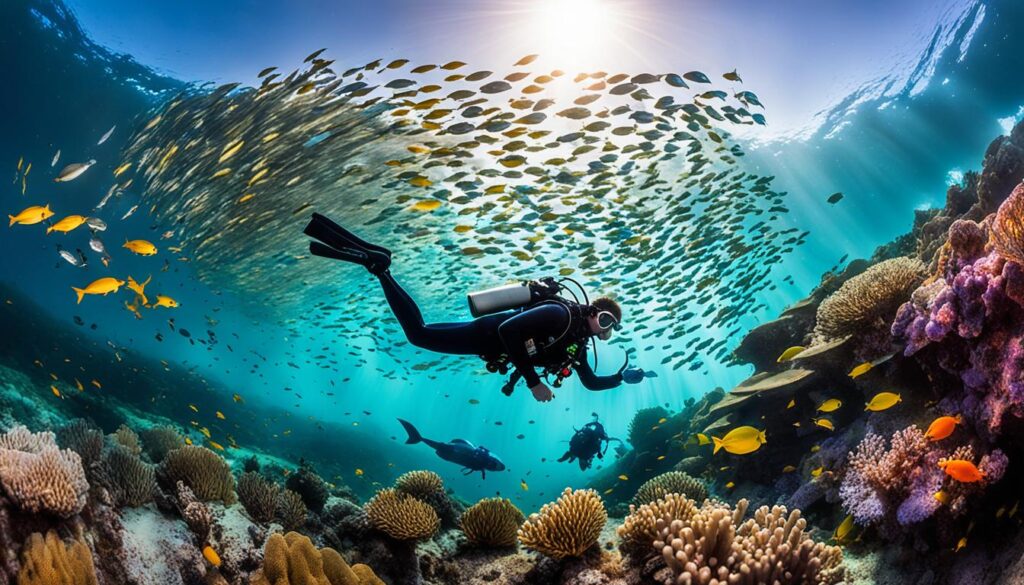
Ningaloo Reef – A World Heritage Wonder
If you’re a fan of perth spearfishing and want to explore breathtaking dive sites, look no further than Ningaloo Reef. As a UNESCO Marine World Heritage site, this natural wonder is a must-visit destination for underwater enthusiasts.
Located just a few hours’ drive from Perth, Ningaloo Reef offers an incredible diversity of marine life and stunning coral formations. Spend five nights immersing yourself in the wonders of this underwater paradise, where you can witness the annual migration of whale sharks.
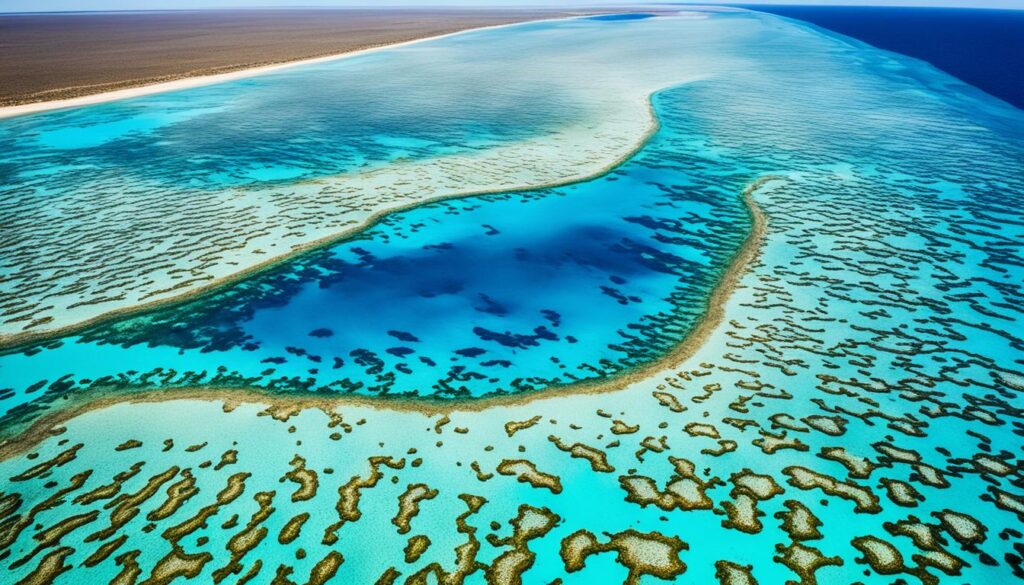
During the trip, you’ll have the opportunity to encounter seven species of sharks, including the majestic whale sharks. Imagine swimming alongside these gentle giants, observing their grace and beauty up close.
With at least three water-based activities organized per day, you’ll have ample opportunities for thrilling dives and memorable encounters with marine life. Whether it’s exploring vibrant coral gardens, encountering playful manta rays, or admiring humpback whales, the adventures at Ningaloo Reef are endless.
After an adventurous day, spend three nights on board A Shore Thing, a comfortable and well-equipped vessel that will be your home away from home. Take in the stunning sunsets and enjoy the tranquil atmosphere of this unique accommodation.
To make your Australian trip even more extraordinary, include a visit to Sal Salis, where you can experience three nights of luxury while being immersed in nature. This six-week adventure is an opportunity to indulge in the best of both worlds, from thrilling dives to serene beachside relaxation.
| Statistic | Value |
|---|---|
| Species of sharks seen | 7 |
| Nights spent exploring Ningaloo Reef | 5 |
| Times the diving trip movie was watched | 20 |
| Water-based activities organized per day | At least 3 |
| Nights spent on A Shore Thing | 3 |
| Duration of the Australian trip | 6 weeks |
Ningaloo Reef is a true marvel of nature, showcasing the rich biodiversity of Western Australia’s waters. As one of the UNESCO Marine World Heritage sites, it stands alongside renowned destinations like Belize’s Barrier Reef Reserve System and Australia’s Great Barrier Reef.
Other UNESCO Marine World Heritage Sites:
- Belize’s Barrier Reef Reserve System: The largest coral reef system in the northern hemisphere.
- Australia’s Great Barrier Reef: Stretching over 2,300 kilometers and home to thousands of marine species.
- Tubbataha Reefs Natural Park in the Philippines: Supports over 360 species of coral and nearly 700 species of fish.
- Komodo National Park in Indonesia: Boasting over 1,000 fish species and 250 coral species.
- Cocos Island National Park off the coast of Costa Rica: Renowned for its remote and unspoiled diving environment.
Immerse yourself in the wonders of Ningaloo Reef and embark on a memorable journey into the depths of Australia’s marine treasures.
Perth’s Breathtaking Marine Life
Perth, Western Australia, is a haven for diving enthusiasts seeking unforgettable marine life encounters. The vibrant underwater ecosystems surrounding Perth offer a rich variety of species, making it an ideal destination for both snorkelers and spearfishers alike.
As you explore the depths, keep your eyes peeled for the mesmerizing sight of weedy sea dragons gracefully gliding through the water. These elegant creatures, with their intricate camouflage and gentle demeanor, are a true marvel to behold. And if you’re lucky, you may even spot the elusive blue-ringed octopus, known for its stunning, iridescent appearance.
Hidden among the limestone ledges, you’ll come across the enigmatic Wobbegong sharks. These masters of disguise blend seamlessly with their surroundings, making them a thrilling discovery during your underwater adventures.
But the awe-inspiring encounters don’t end there. Swirling through the azure waters, dolphins and turtles add a touch of magic to your diving experience. Their playful nature and graceful movements will leave you with cherished memories to last a lifetime. And don’t forget to keep an eye out for the enchanting leafy sea dragons, with their vibrant colors and decorative appendages, truly a sight to behold.
Perth offers a range of courses and guided dives for all skill levels. Whether you’re a beginner or a seasoned diver, there’s an opportunity for you to delve into the captivating marine world. From freediving courses that cover theory, pool training, and ocean exploration to specialized spearfishing courses, you can choose the adventure that suits you best.
Immerse yourself in the beauty and wonder of Perth’s marine life. Discover the secrets of the ocean and create memories that will last a lifetime. Book your adventure today and experience the breathtaking marine world that awaits you in Perth.
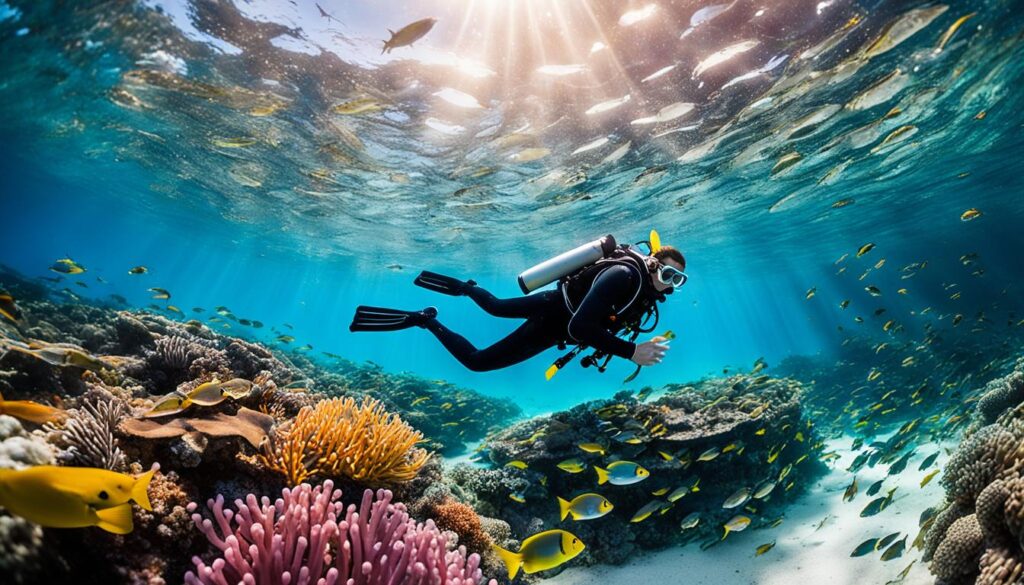
Conclusion
Western Australia’s coastline offers an incredible spearfishing experience throughout the seasons. While there are concerns about the impact of spearfishing on fish populations, it is important to note that spearfishing is highly selective, targeting specific species and sizes, and has minimal direct impact on non-target species. Additionally, breath-hold spearfishing is limited to shallow water, which means there is a proportionally lesser availability of target fish compared to other gear types.
It is crucial to practice responsible spearfishing and adhere to local regulations to protect the health of our oceans. Spearfishers should consider adjusting their output controls, such as size and catch limits, to minimize the effects on target species and enhance the protection of functionally important fish like herbivores.
Perth Scuba, a trusted guide in the spearfishing community, provides a range of exciting spearfishing adventures in Western Australia. Whether you’re exploring the stunning reefs of Rottnest Island, diving into the unique underwater destination of Ammunition Jetty, or experiencing the wonders of the world-famous Ningaloo Reef, Perth Scuba is there to support your underwater exploration. With experienced instructors and a commitment to safety, Perth Scuba ensures that both beginners and seasoned spearfishers have a memorable and educational experience. In addition to their Western Australian adventures, they also provide resources for those looking to explore new regions, such as the best spearfishing map in NSW, helping divers find prime locations for their next adventure. With Perth Scuba, you’re always just a dive away from discovering Australia’s incredible marine life.
So, prepare your gear, dive into the diverse marine life of Perth, and enjoy the thrilling adventures of spearfishing in this beautiful region of Australia. Happy spearfishing!
FAQ
What is spearfishing?
Is spearfishing legal in Perth?
What equipment do I need for spearfishing in Perth?
Where are the best spearfishing spots in Perth?
Can I join a spearfishing charter in Perth?
Are there any spearfishing clubs in Perth?
Are there any spearfishing courses available in Perth?
What are the regulations for spearfishing in Perth?
-

 Foraging Guides5 months ago
Foraging Guides5 months agoAre Forage Internships Worth It? Here's What You Need to Know!
-

 Vetted5 months ago
Vetted5 months ago15 Best Wilderness Survival Fiction Books to Fuel Your Adventurous Spirit
-
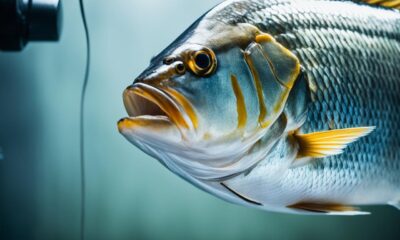
 Coastal Foraging5 months ago
Coastal Foraging5 months agoHow to Dry Age a Fish? The Ultimate Guide for Seafood Lovers
-
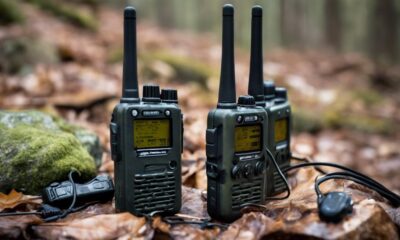
 Coastal Foraging5 months ago
Coastal Foraging5 months ago15 Best GMRS Radios for Preppers: Stay Prepared and Connected in Any Situation
-

 Vetted5 months ago
Vetted5 months ago6 Best Wilderness Survival Games for Ios to Test Your Skills in the Wild
-

 How to Forage5 months ago
How to Forage5 months agoVirginia’s Wild Harvest: Forage for Delicious Edibles!
-

 Coastal Foraging5 months ago
Coastal Foraging5 months ago15 Best Baofeng Radios for Preppers – Stay Connected in Any Situation
-

 Survivalism5 months ago
Survivalism5 months agoPreppers Netflix: Top Shows to Watch for Survival Tips!



